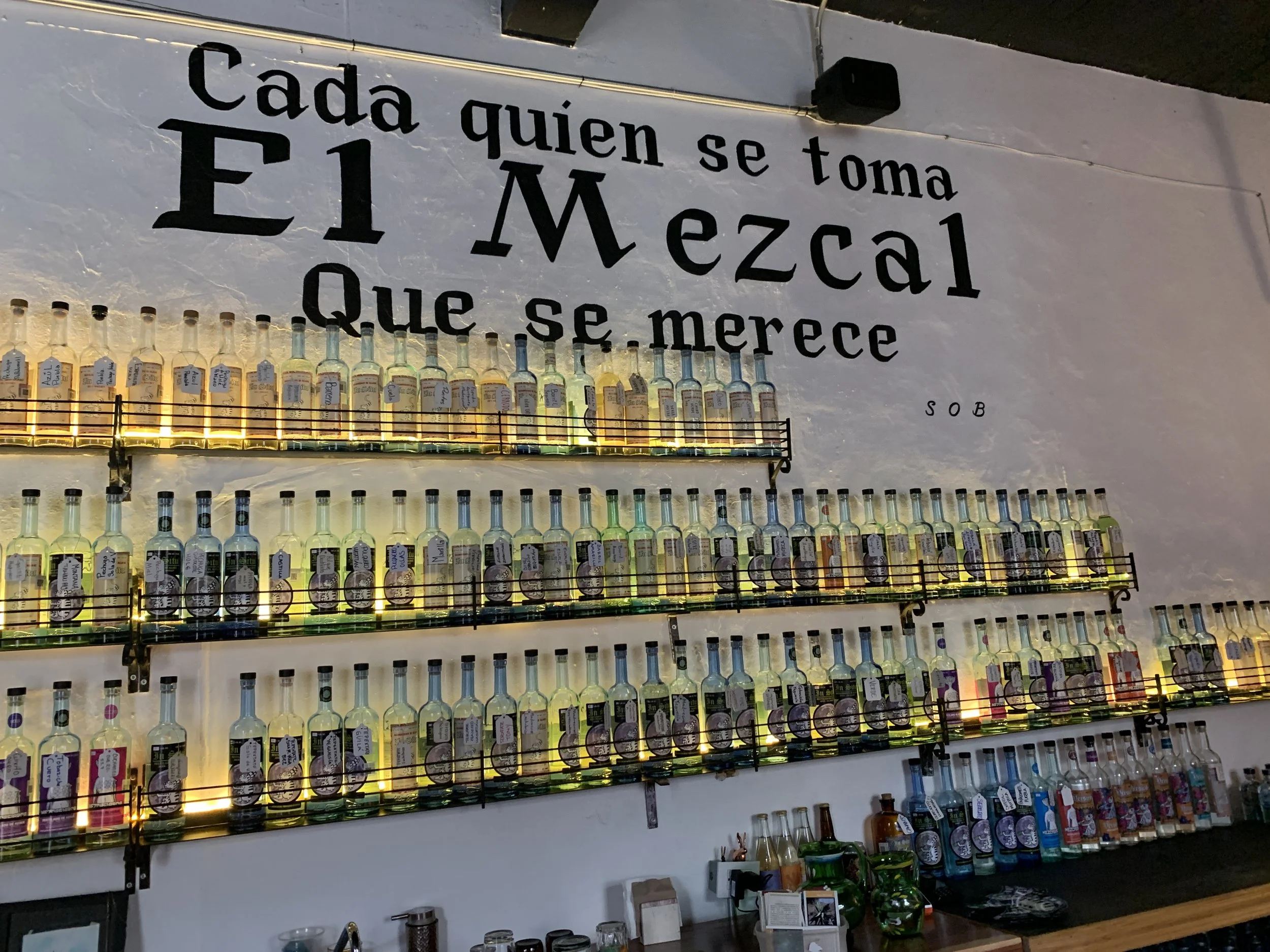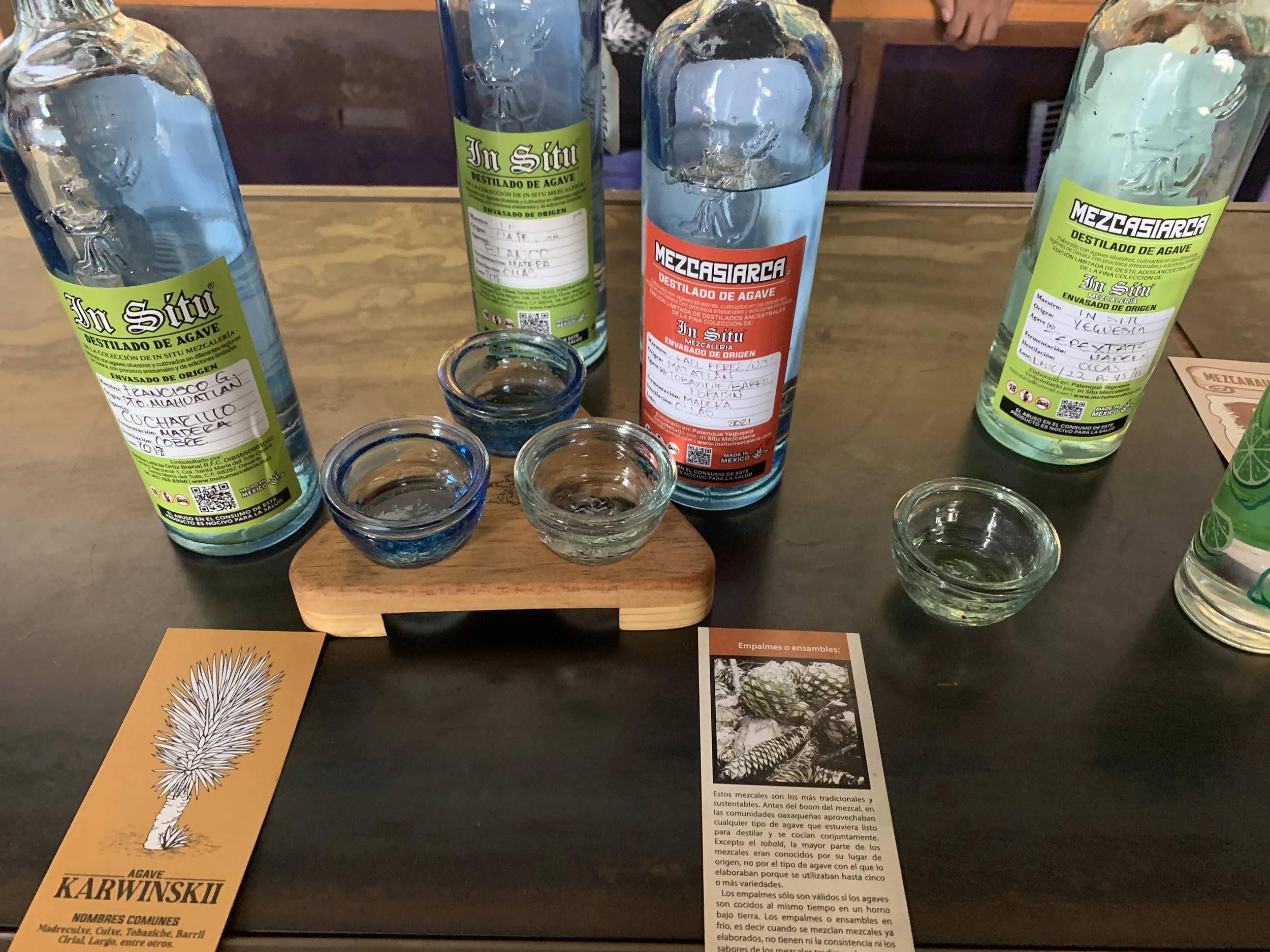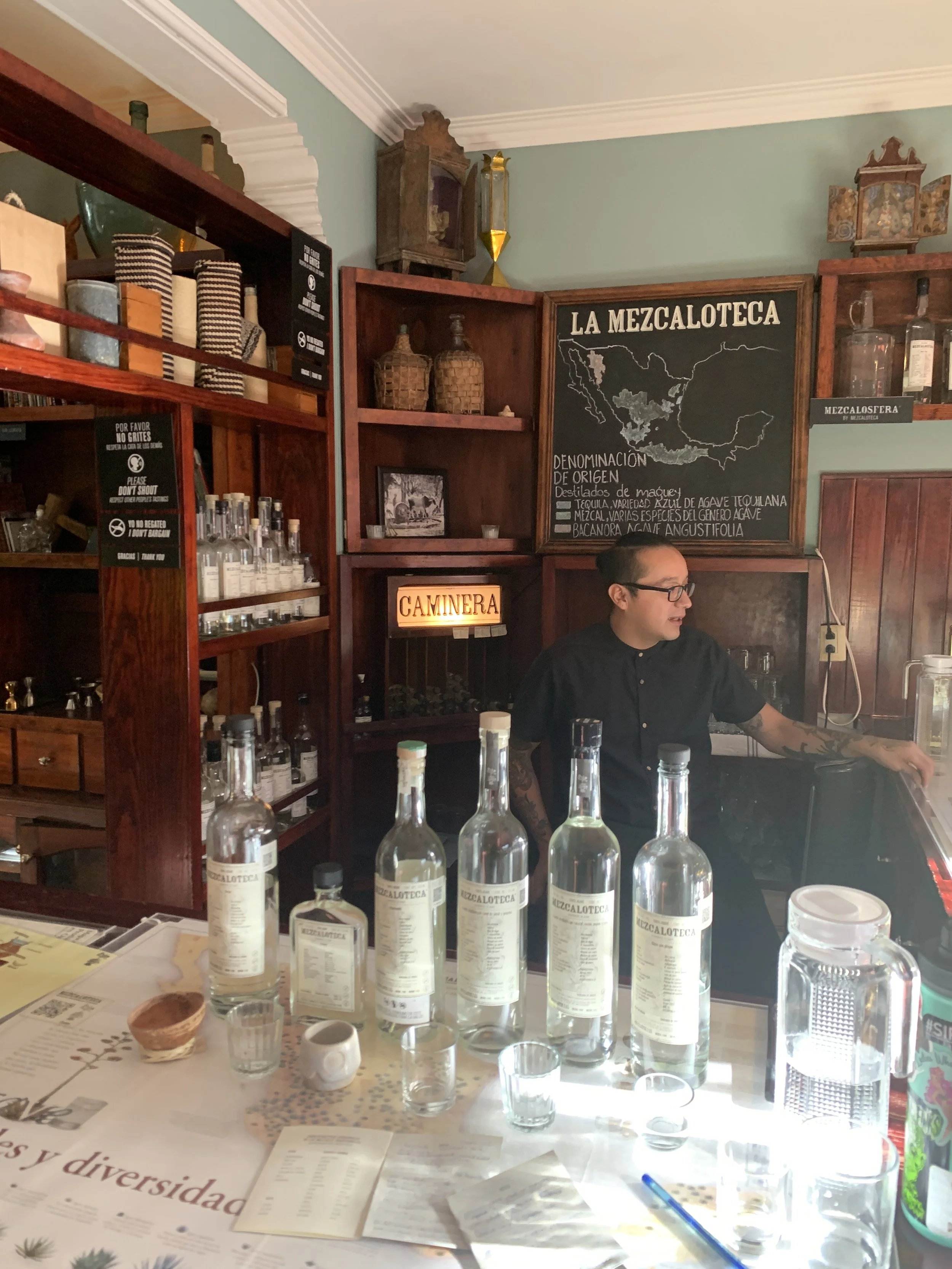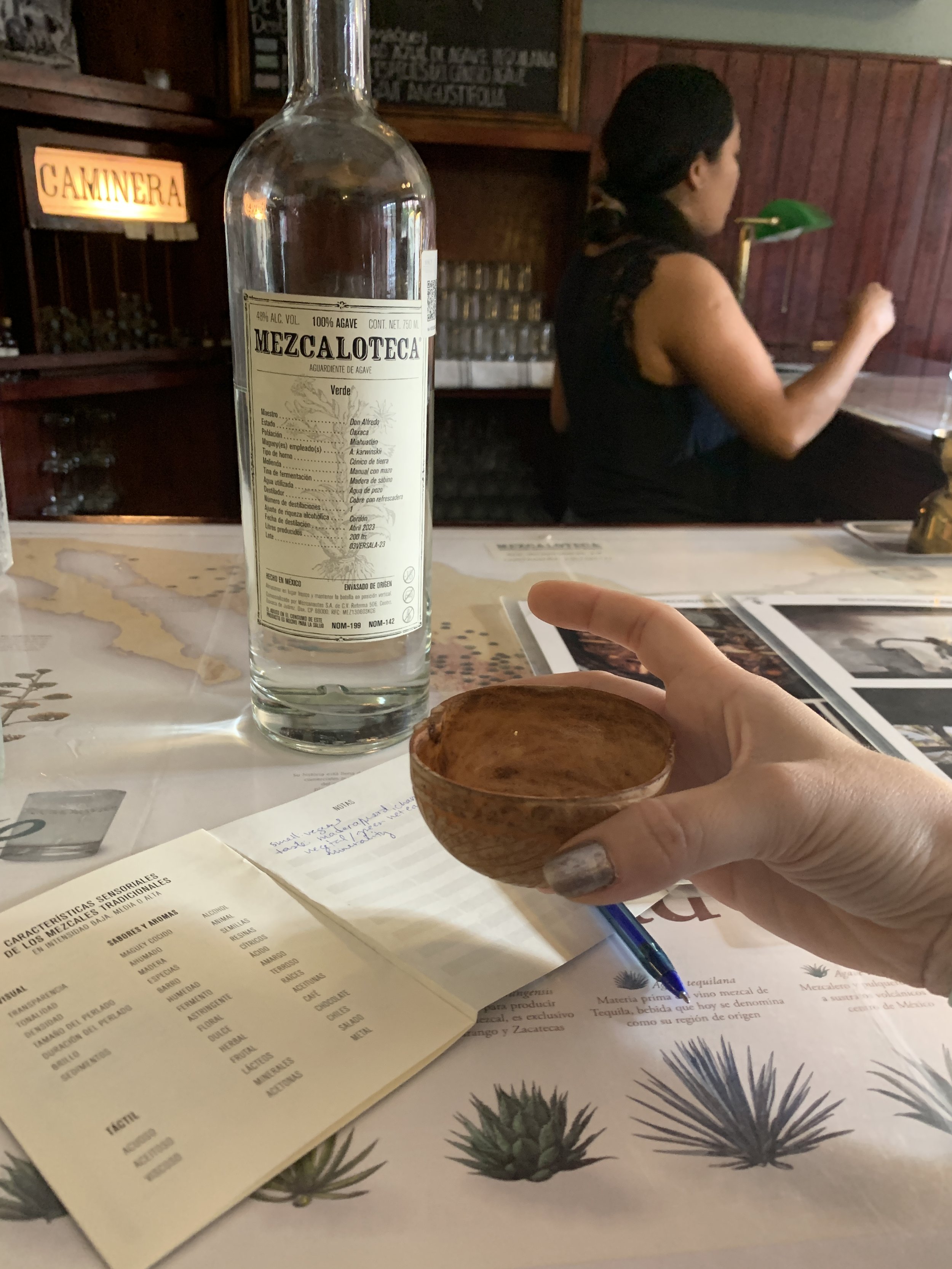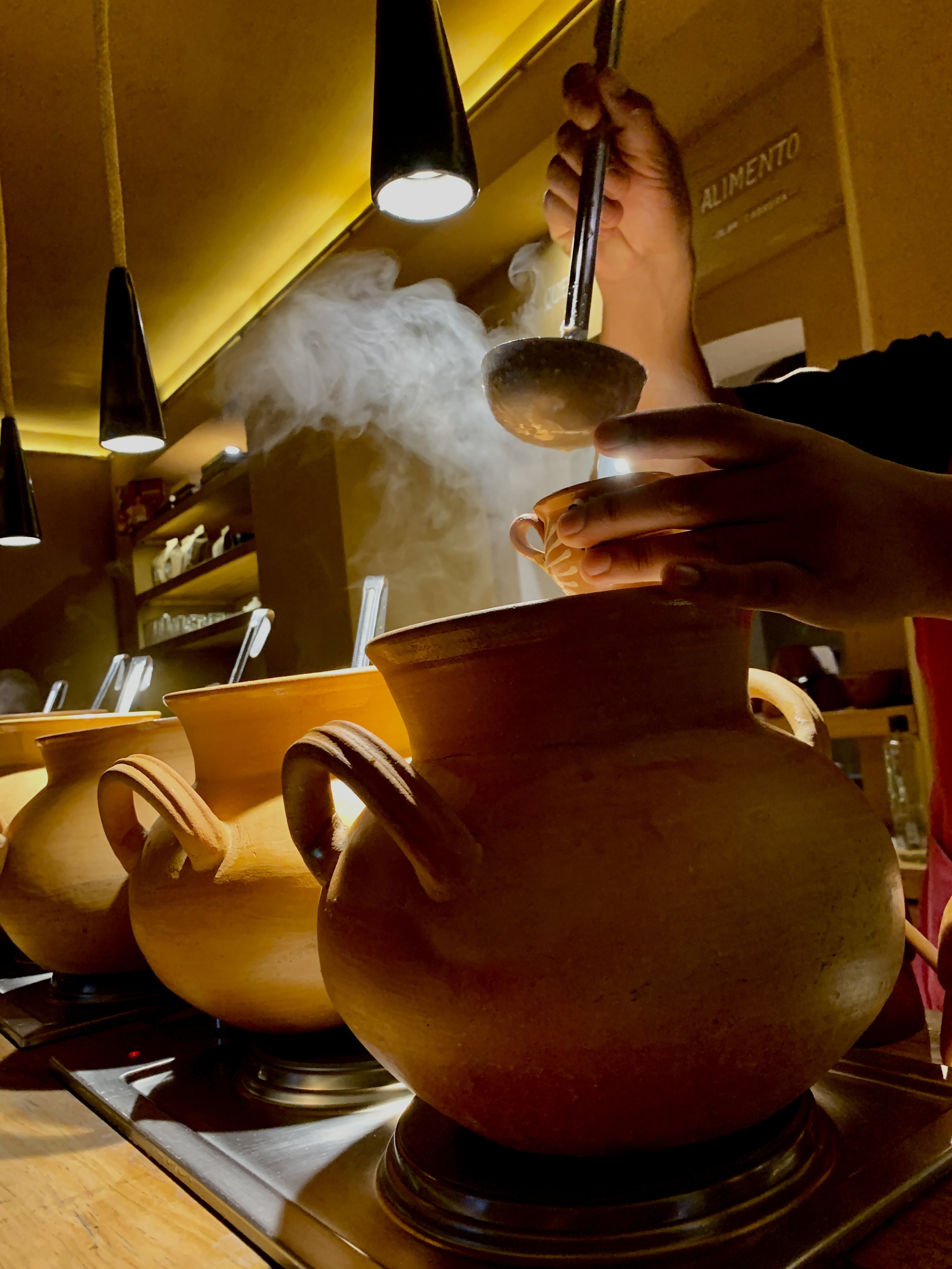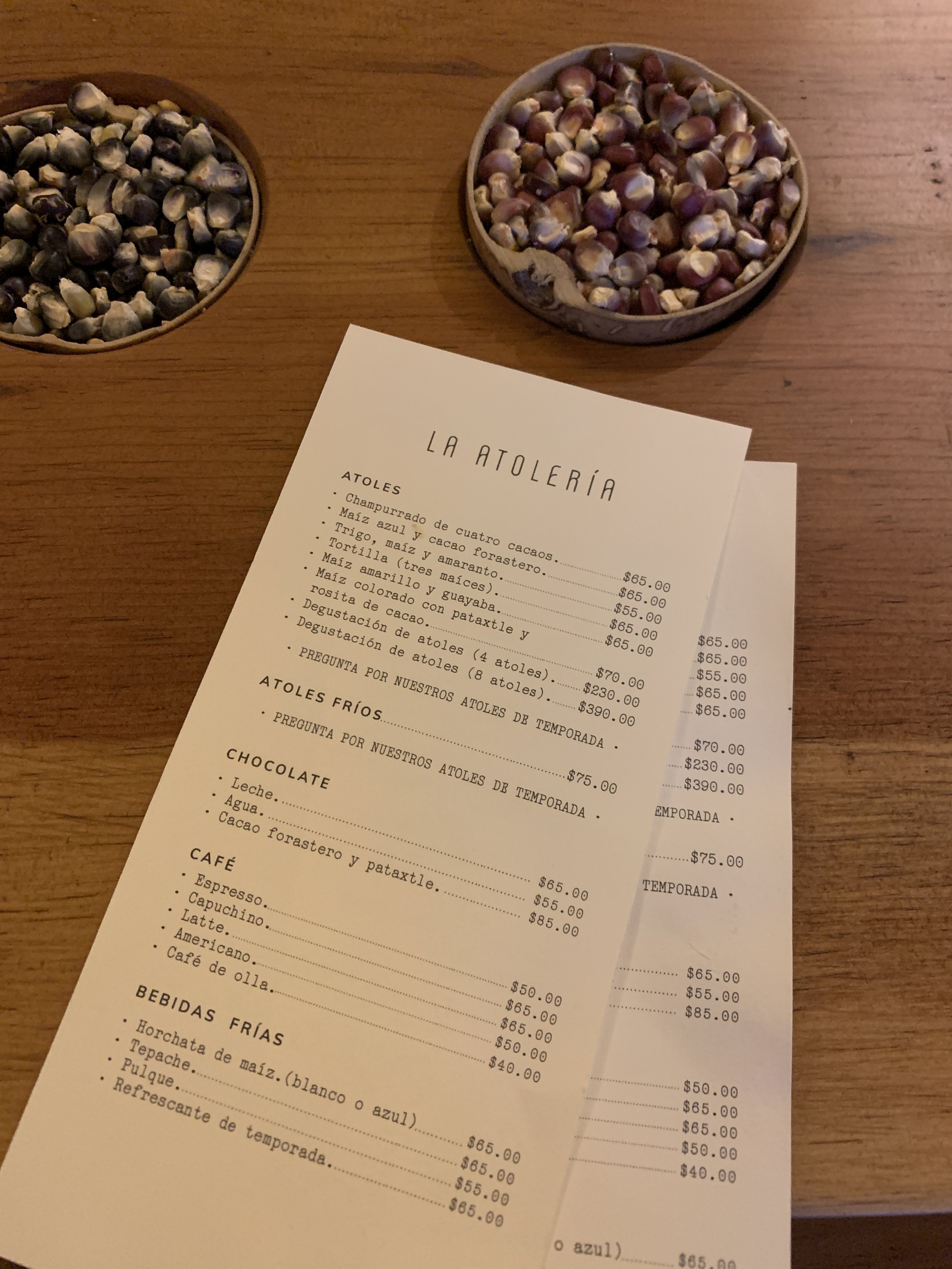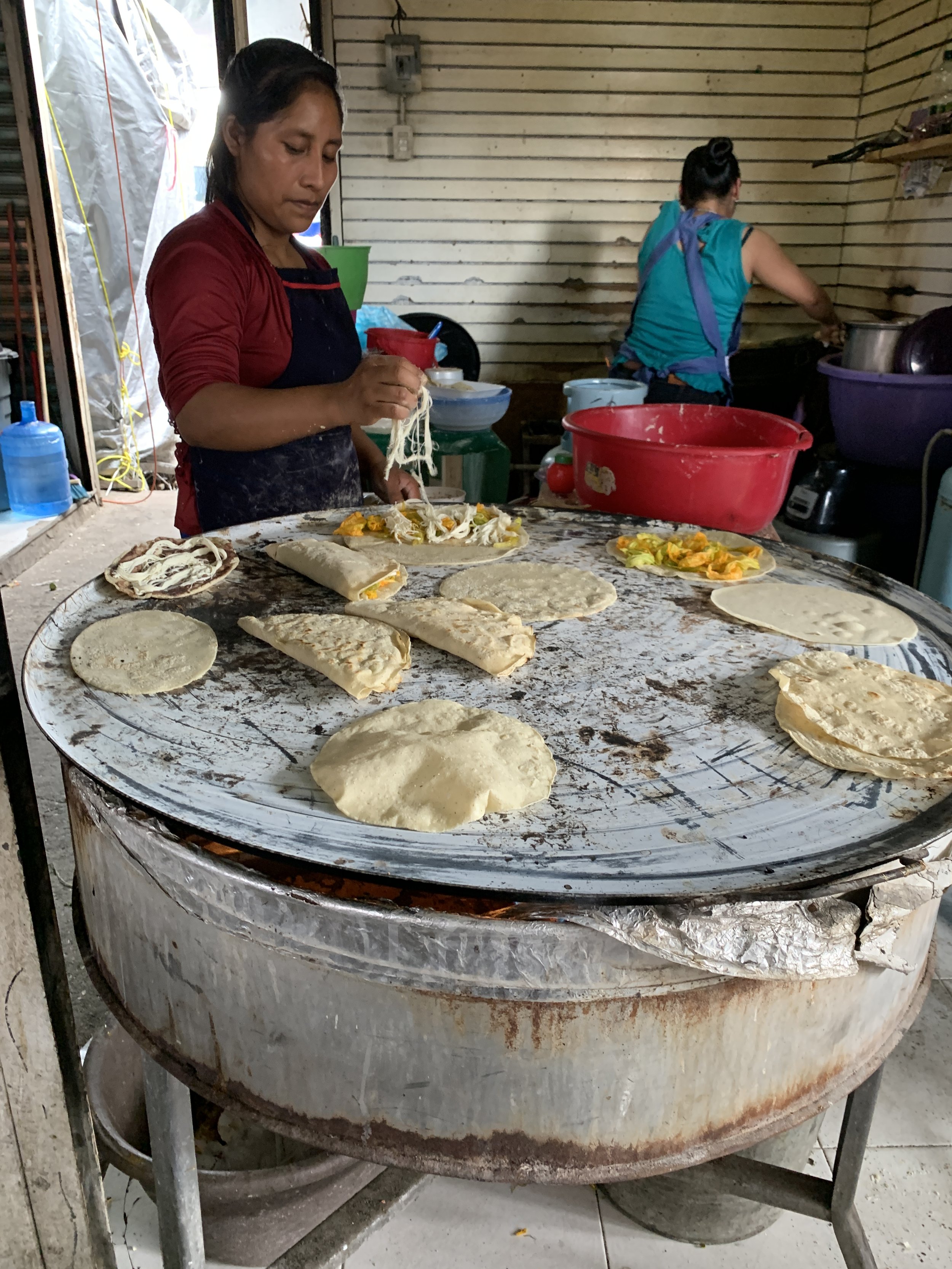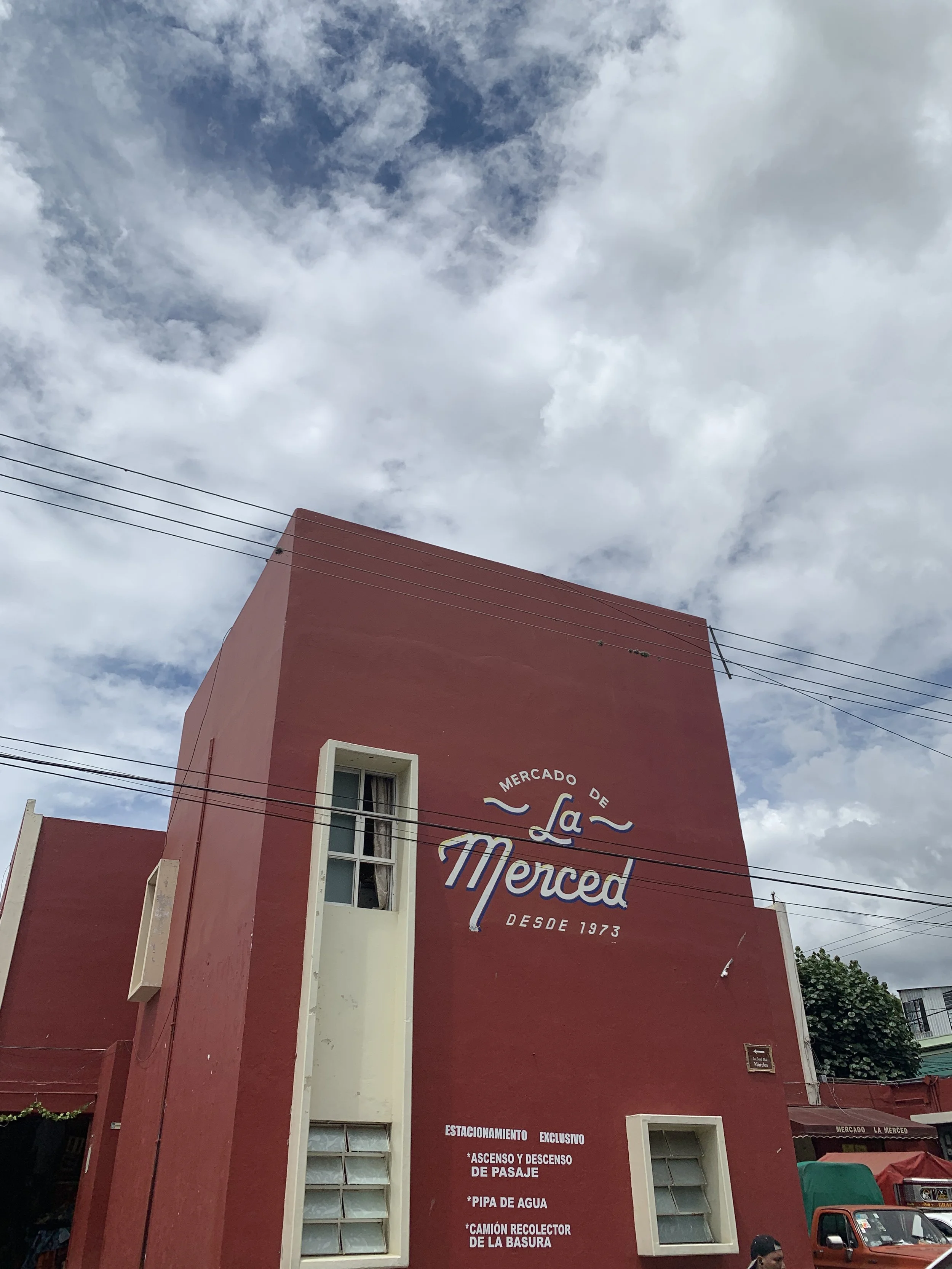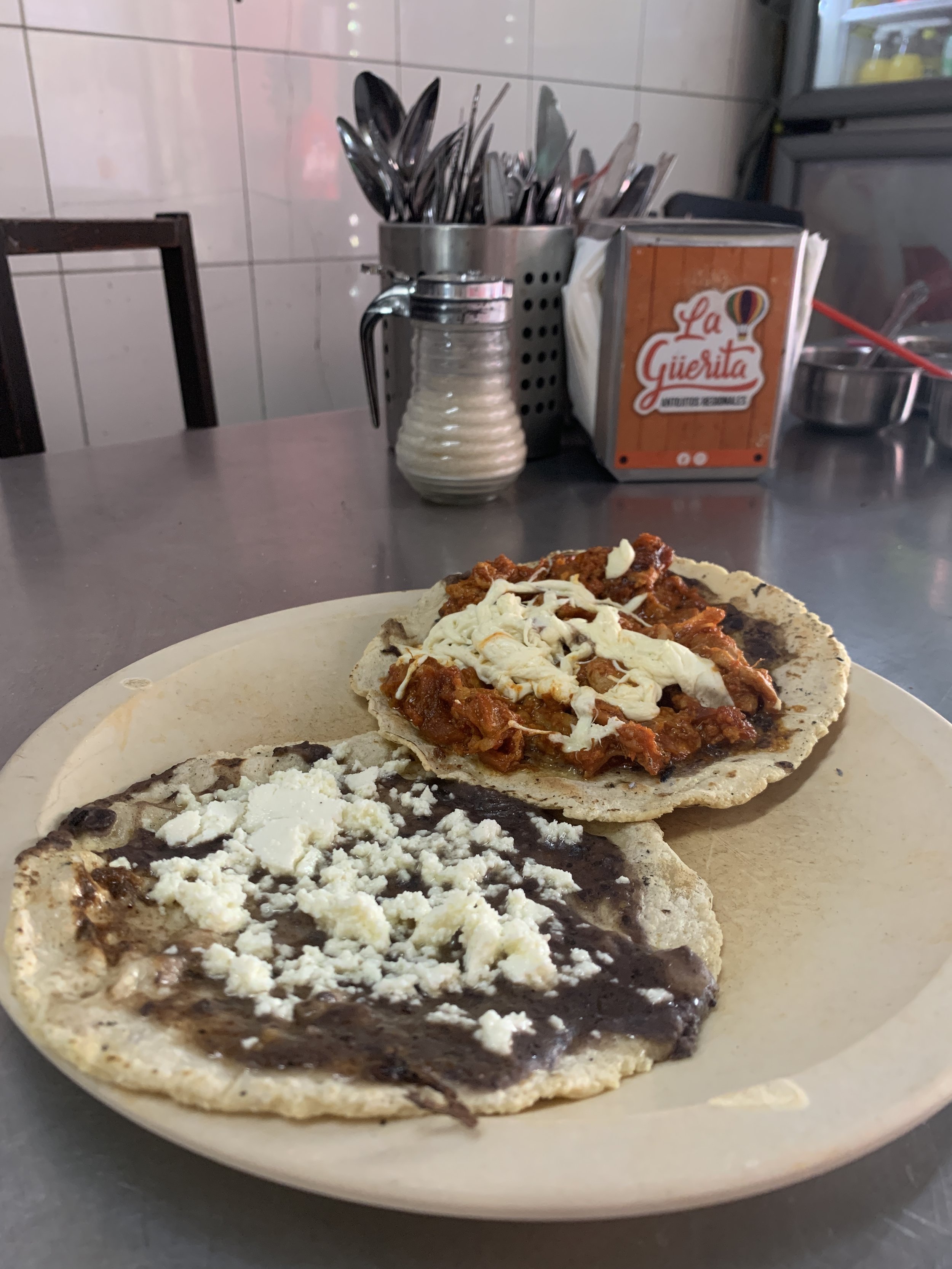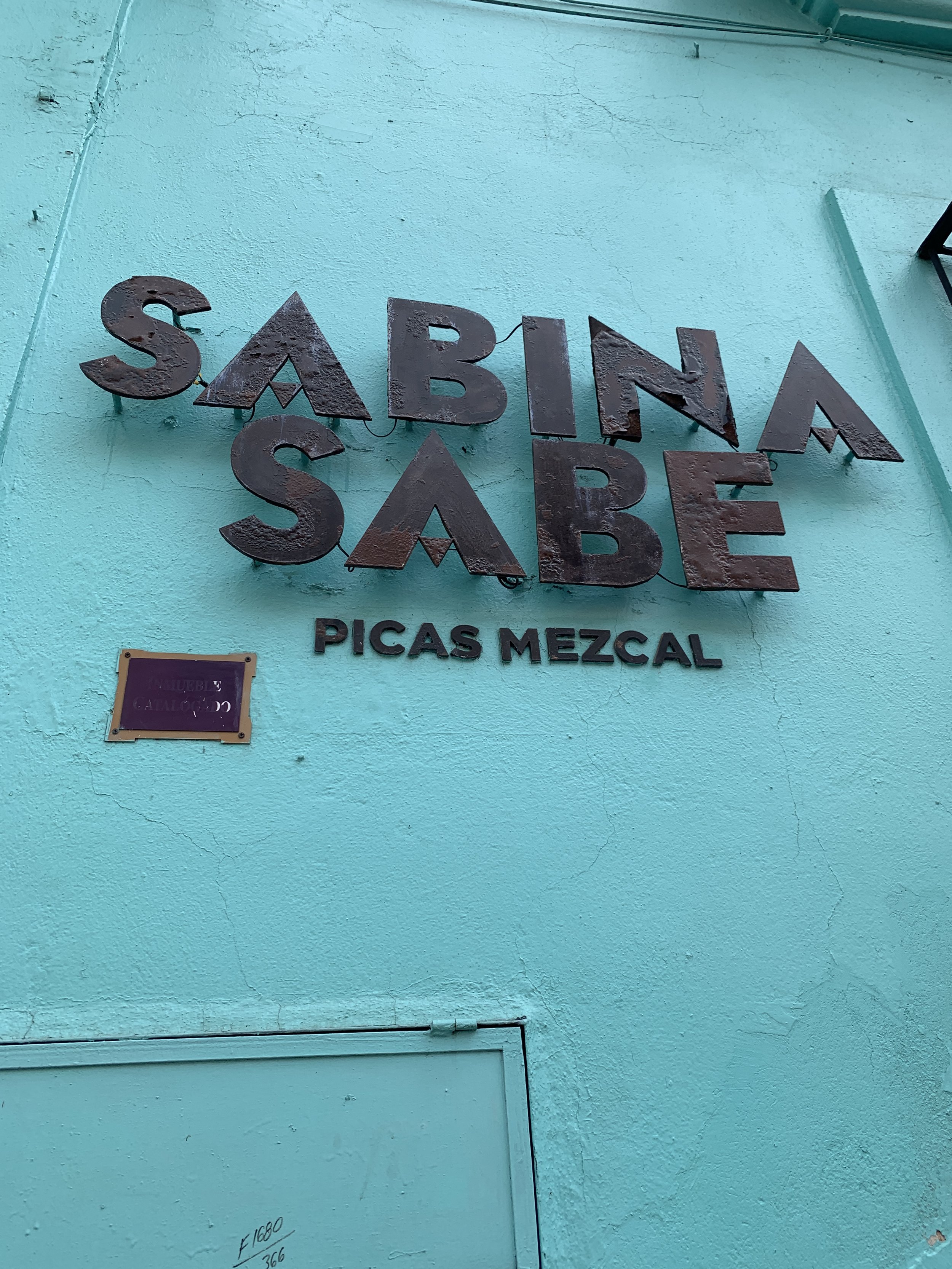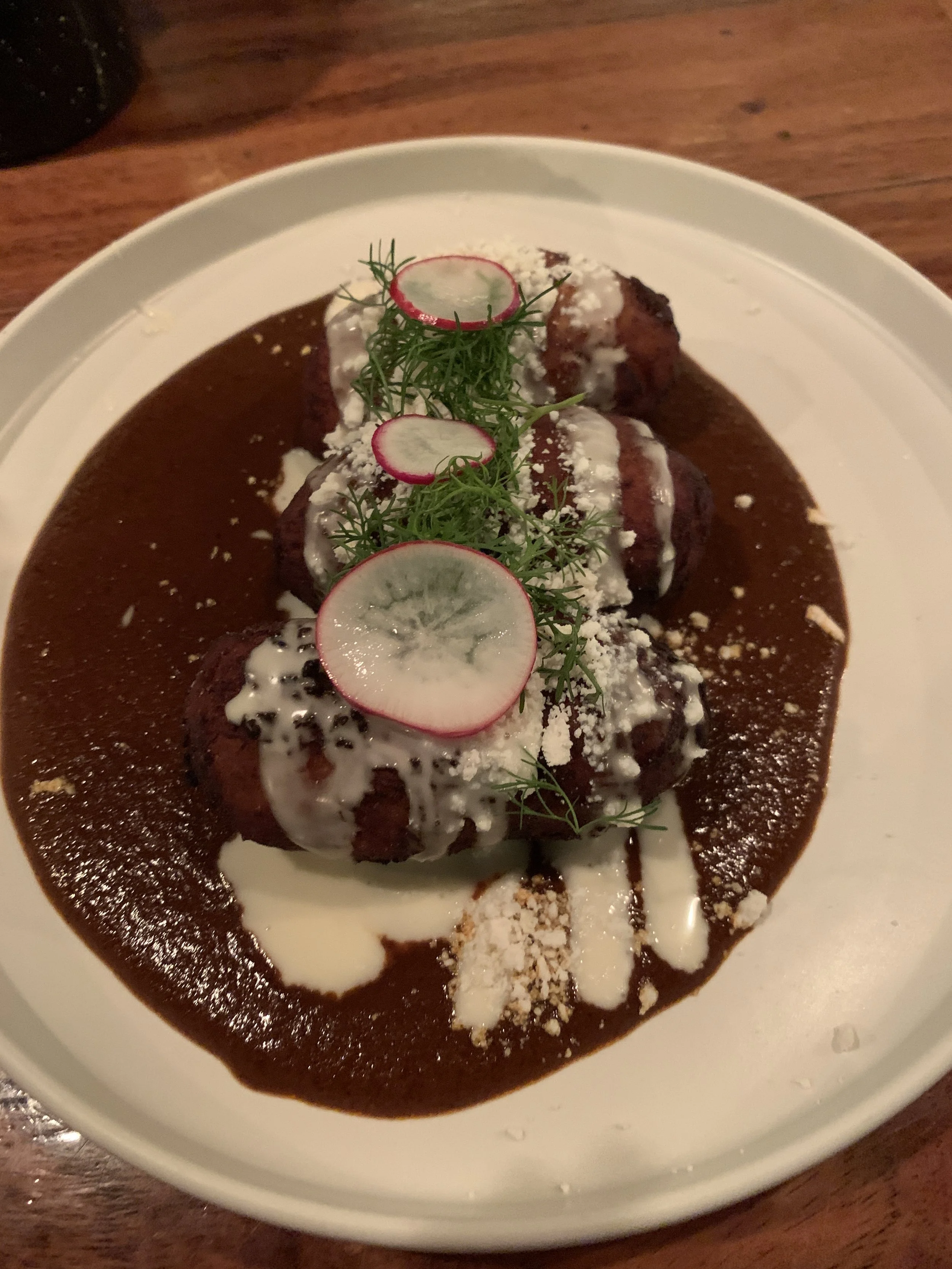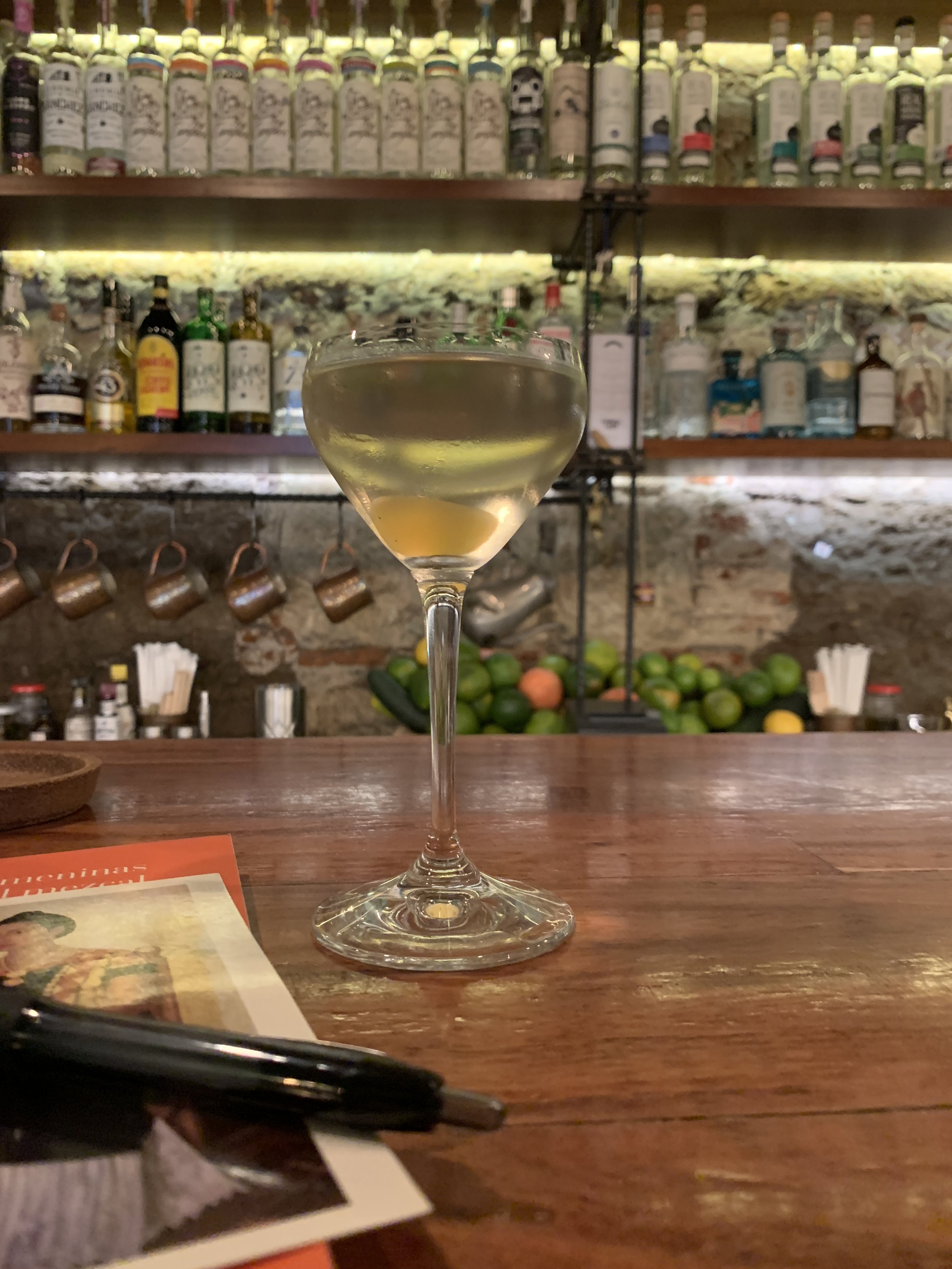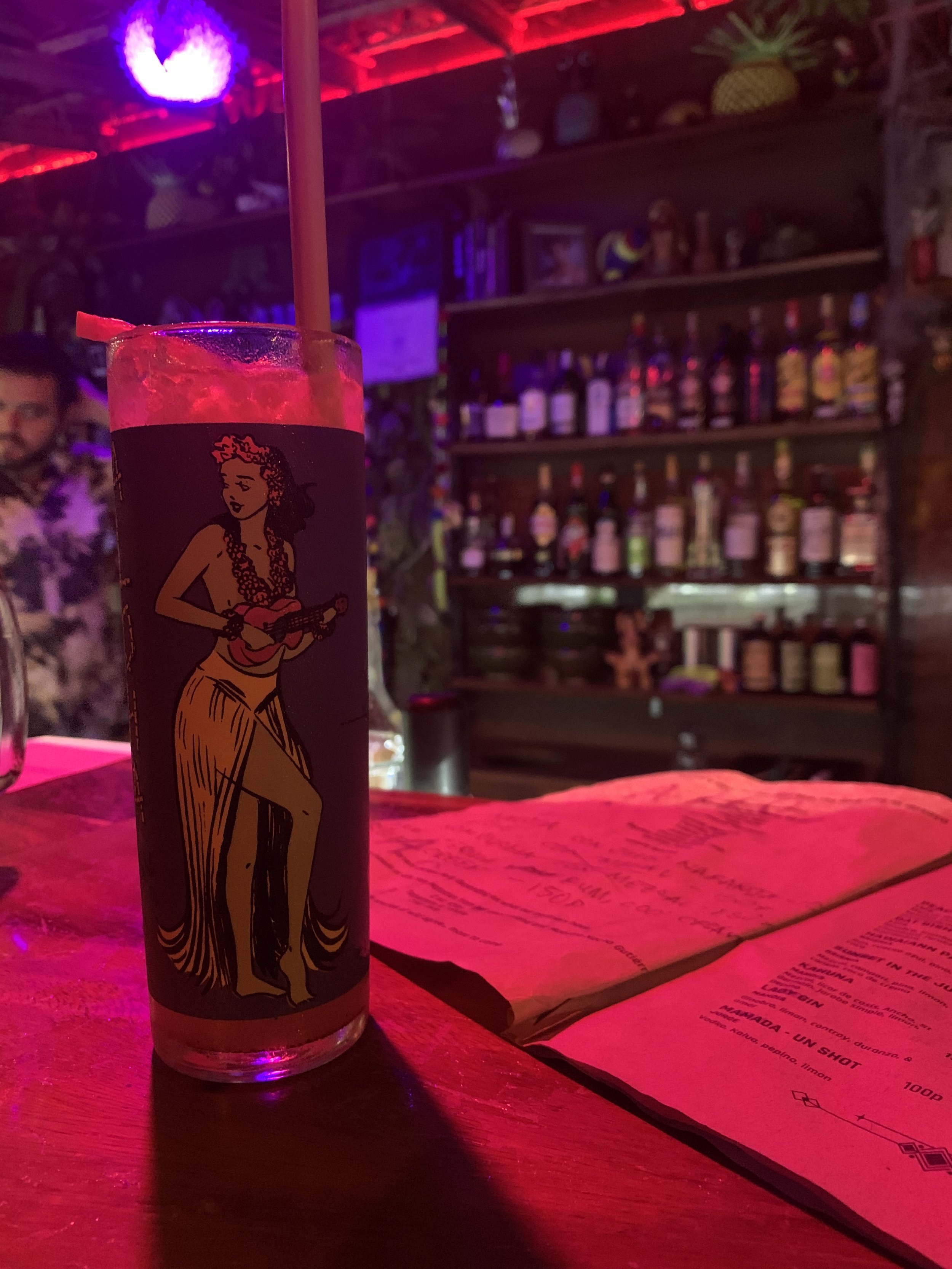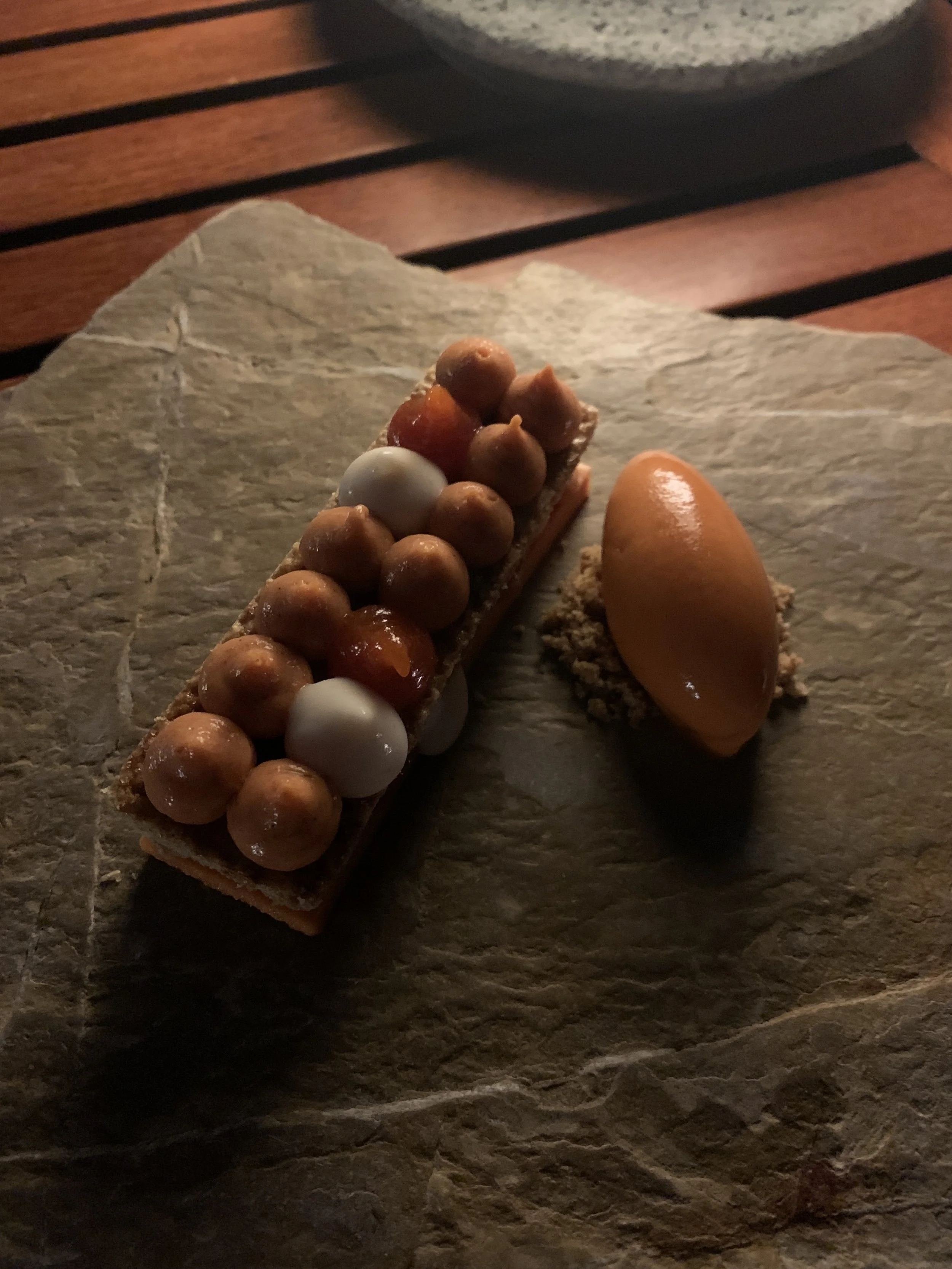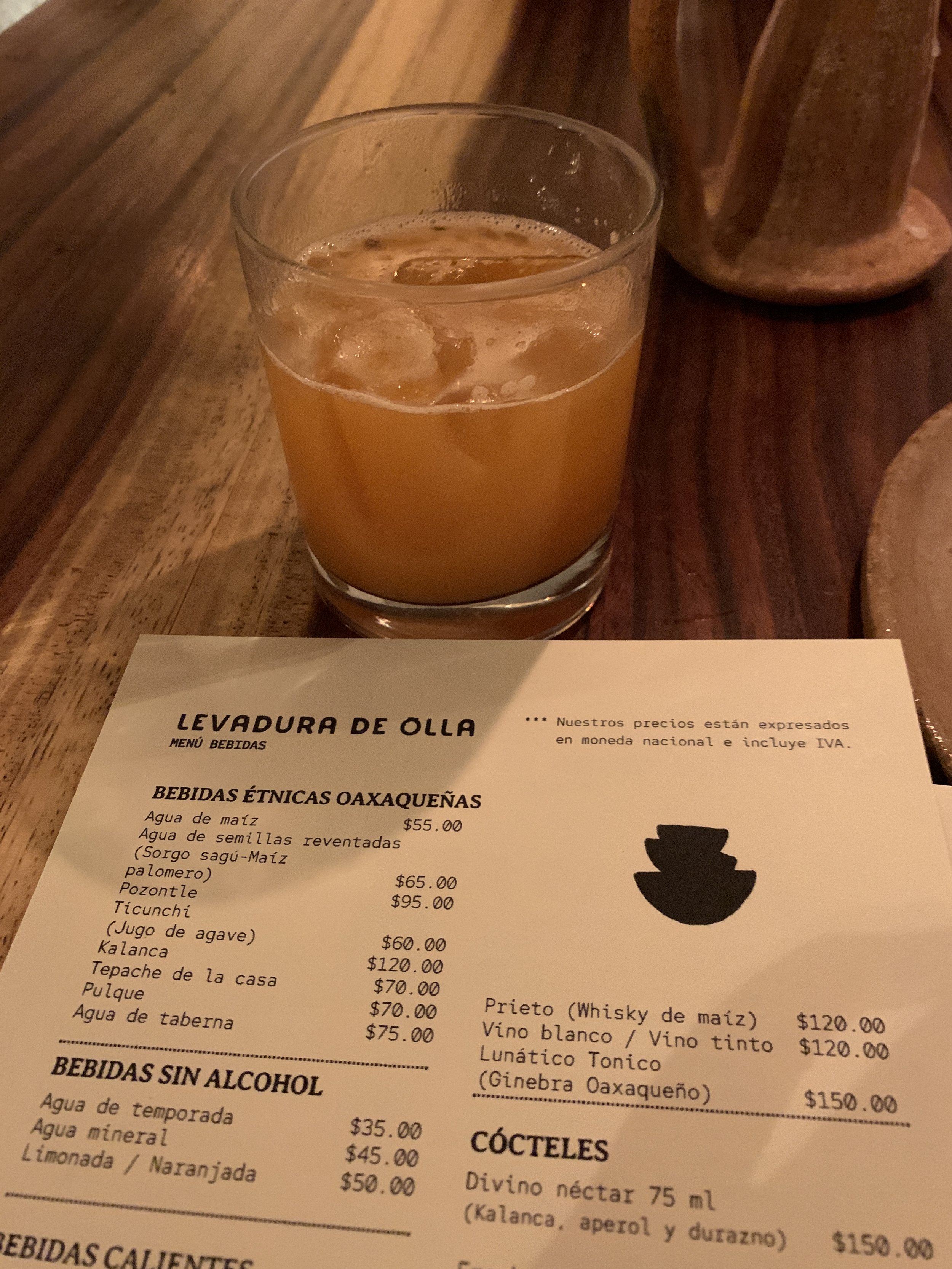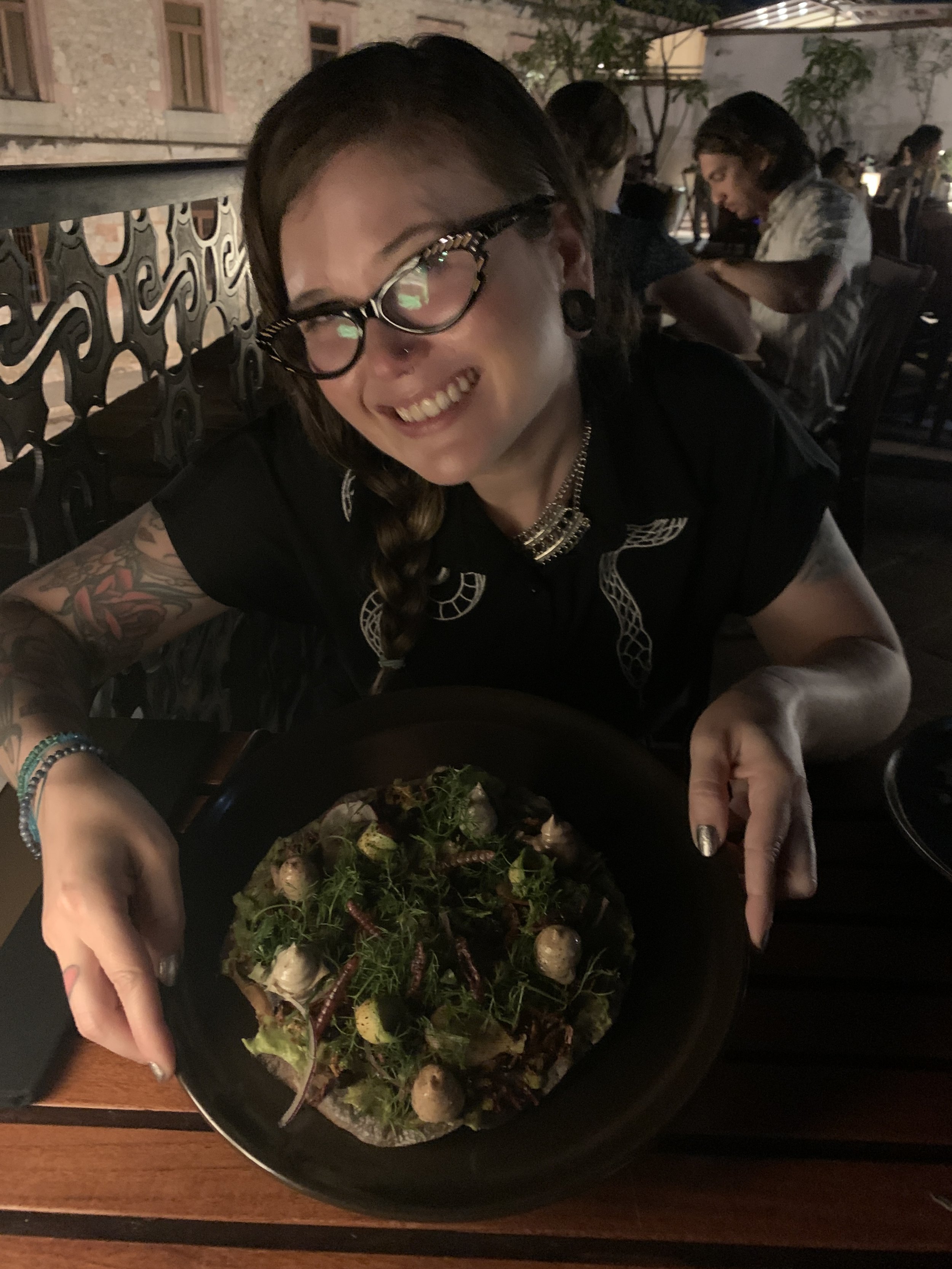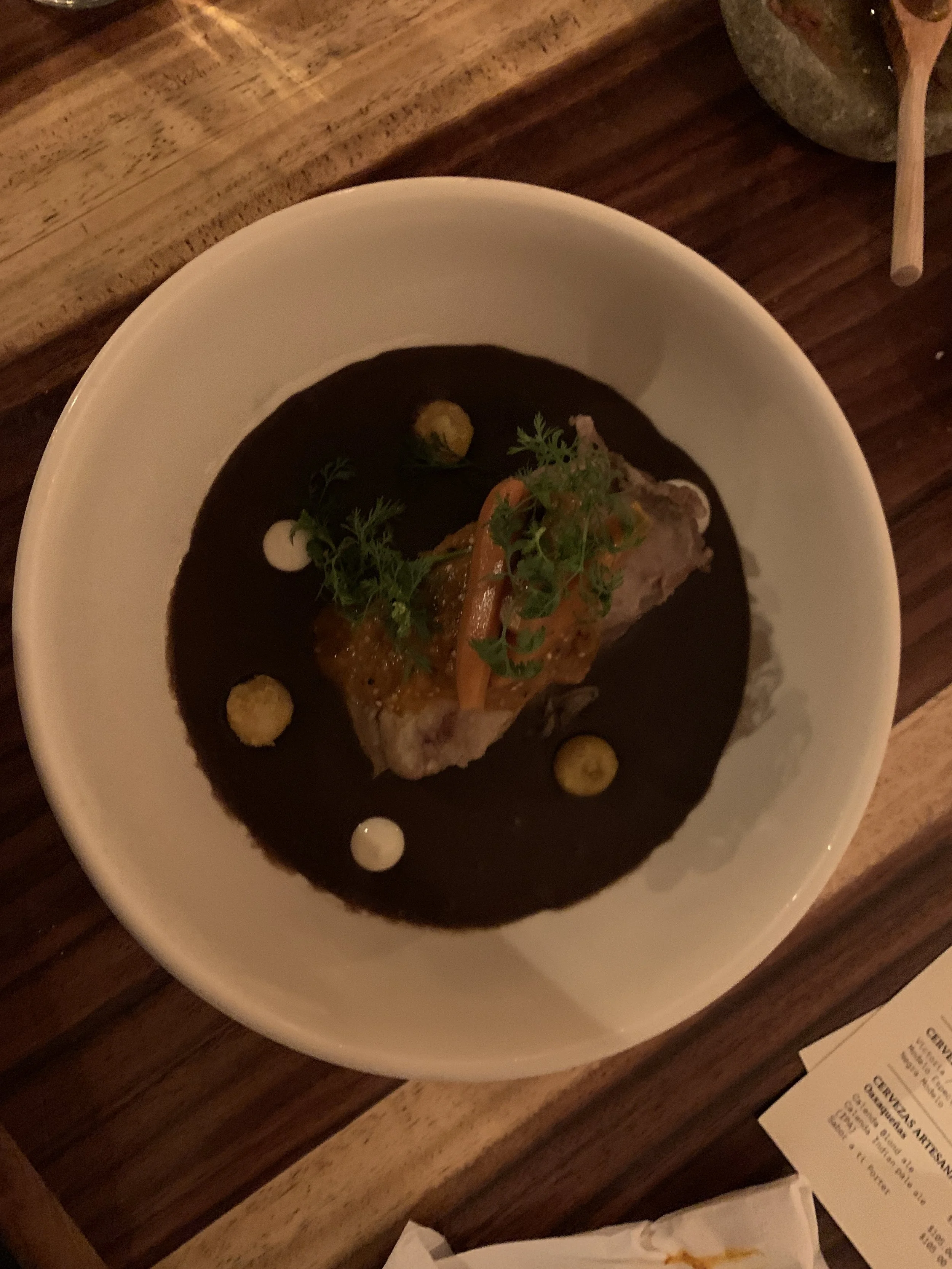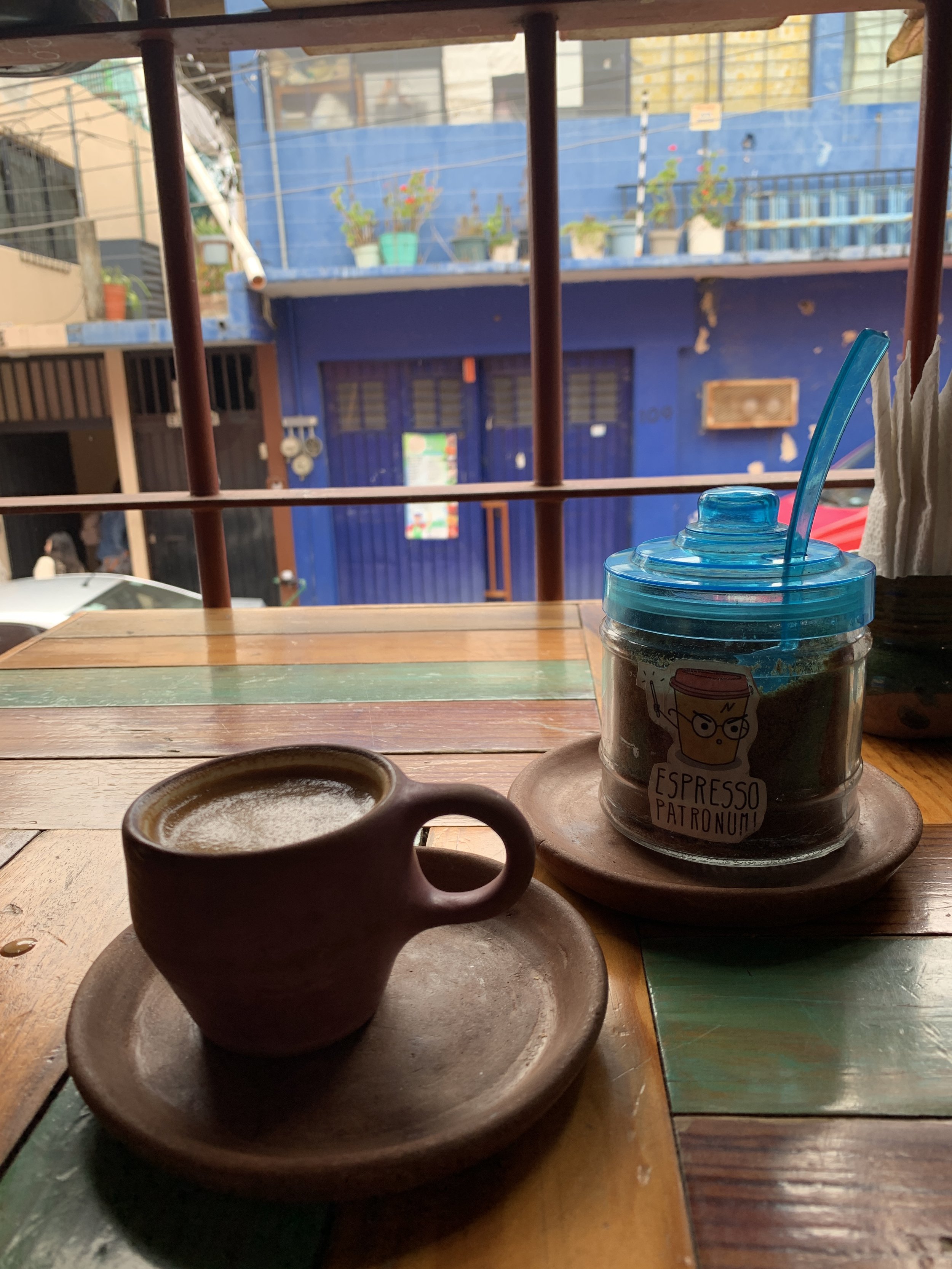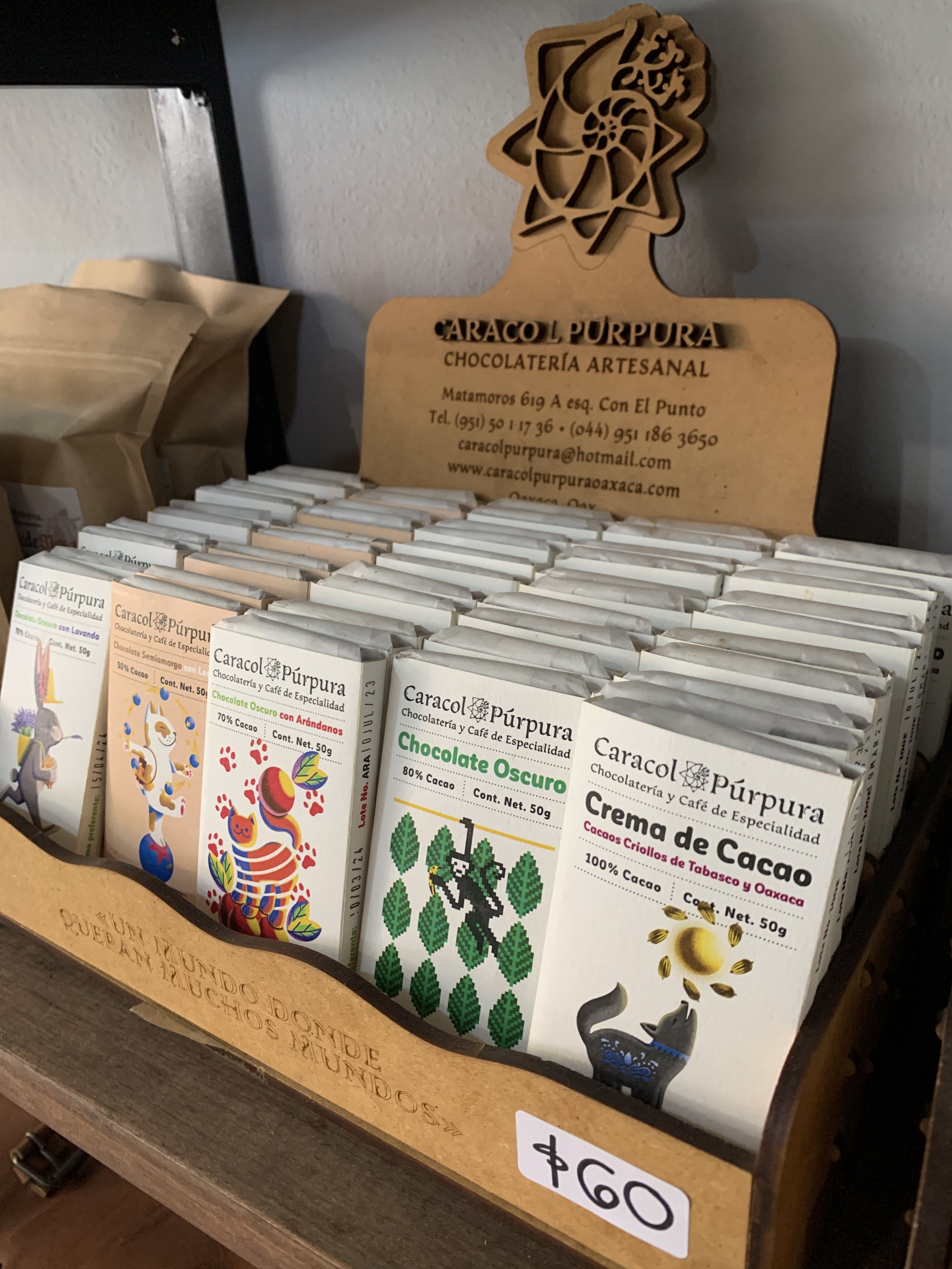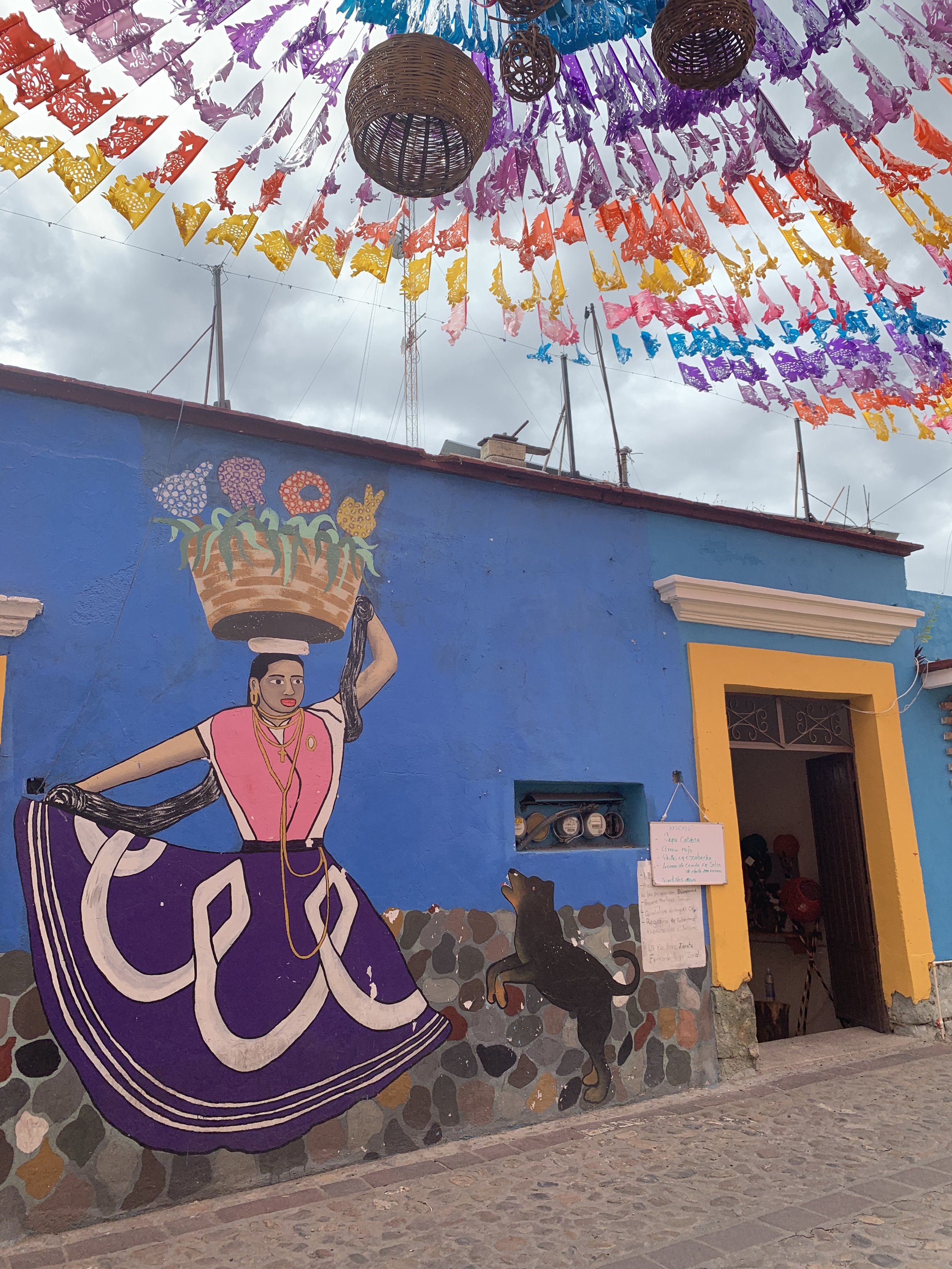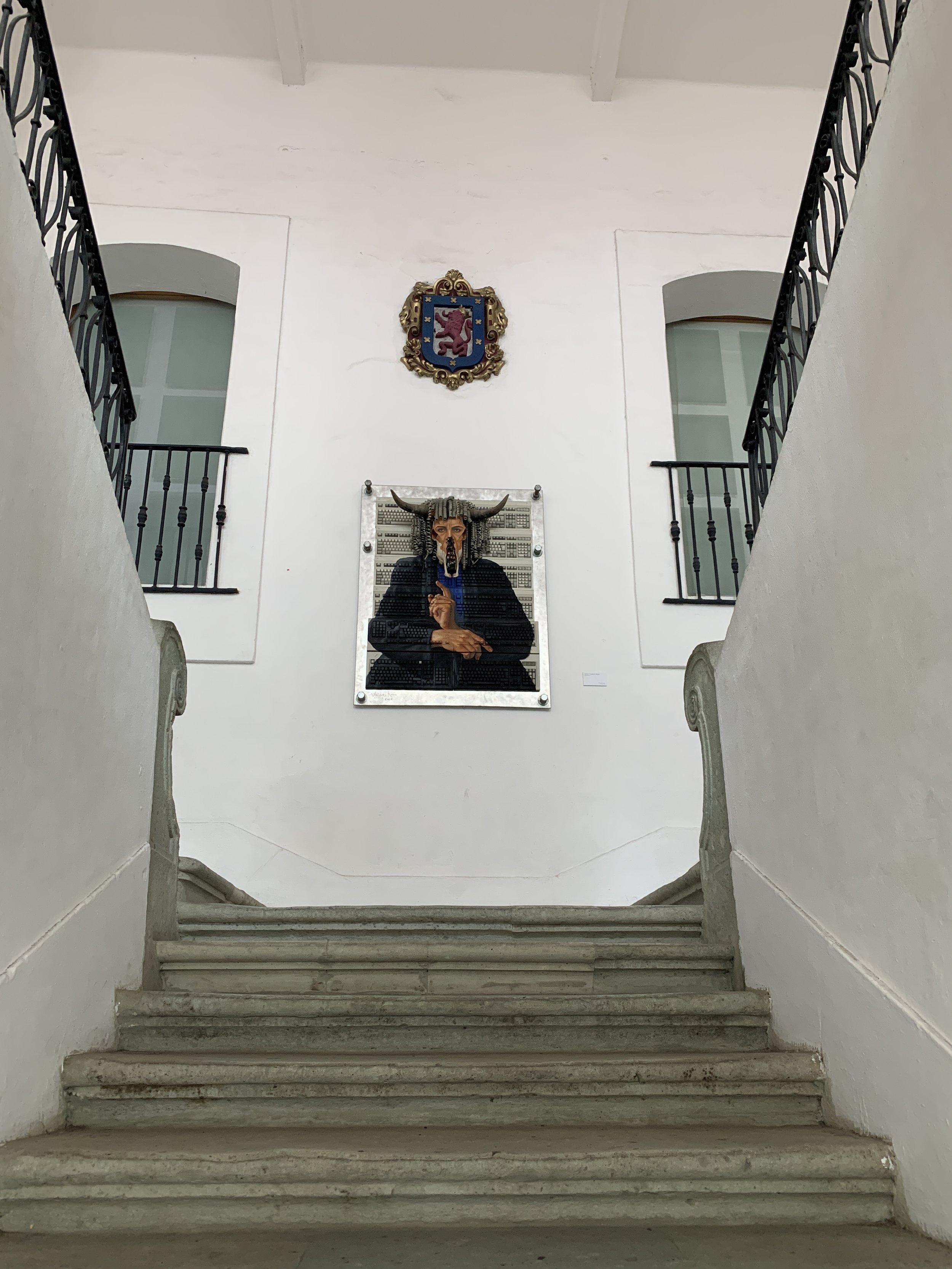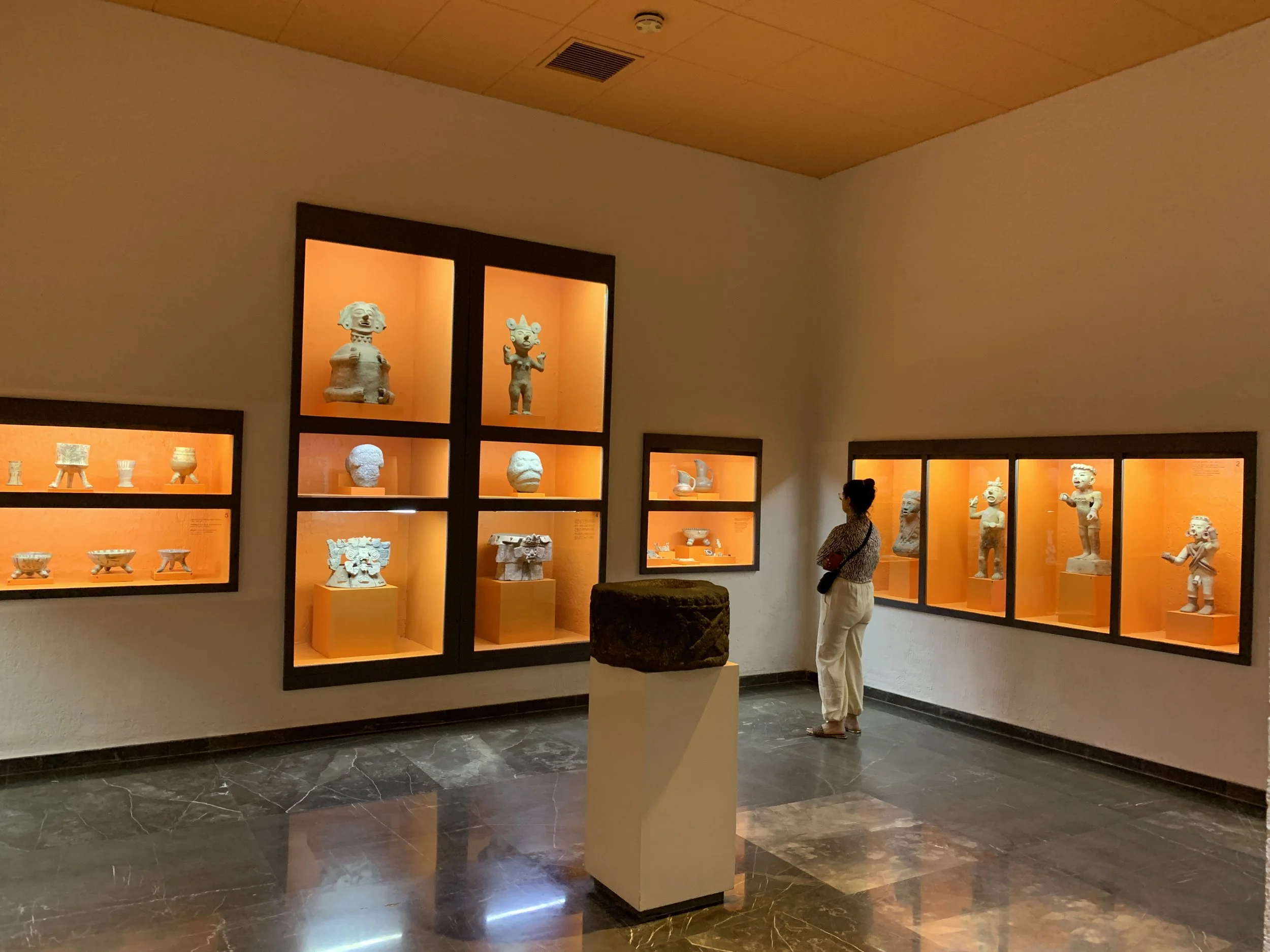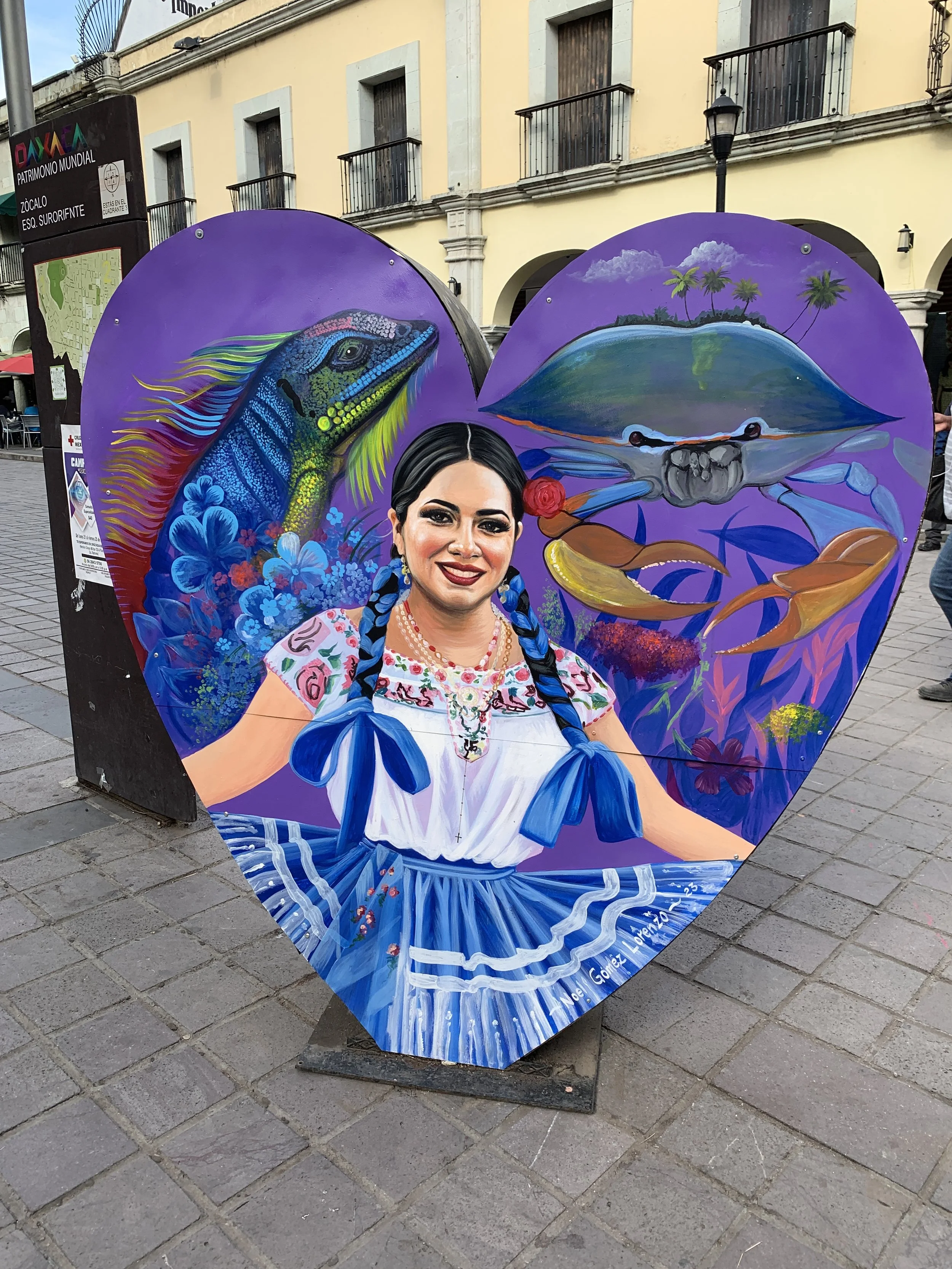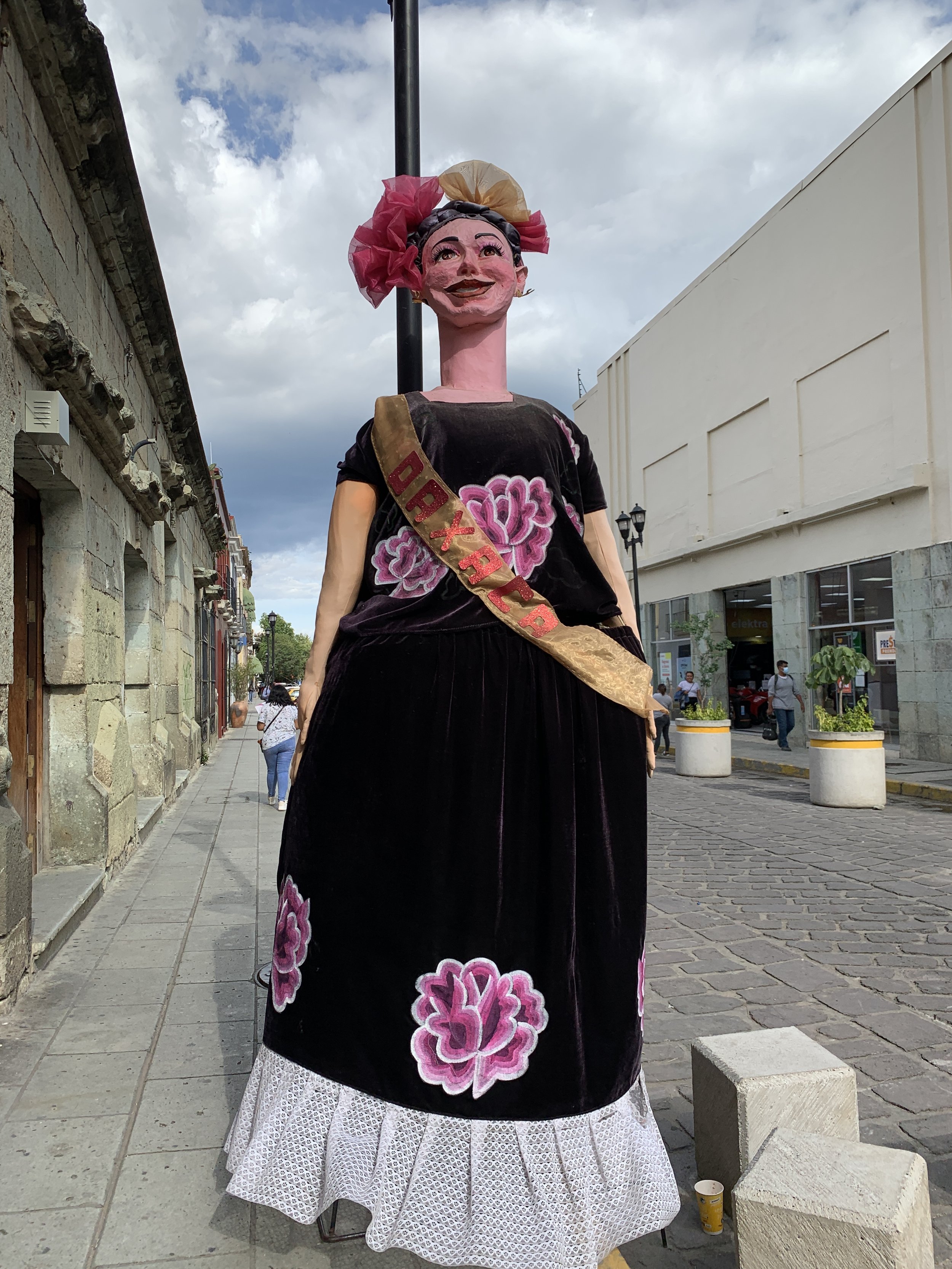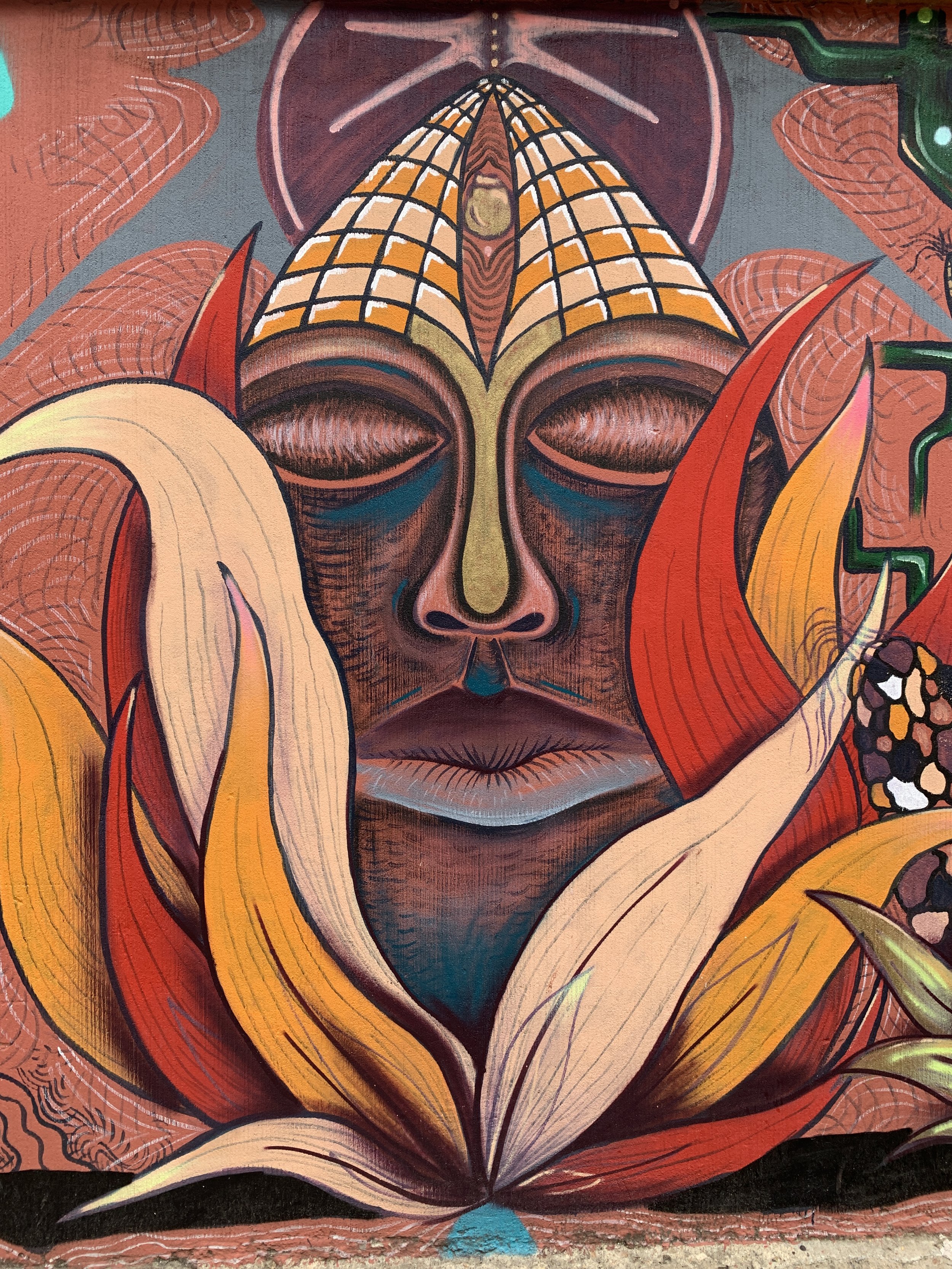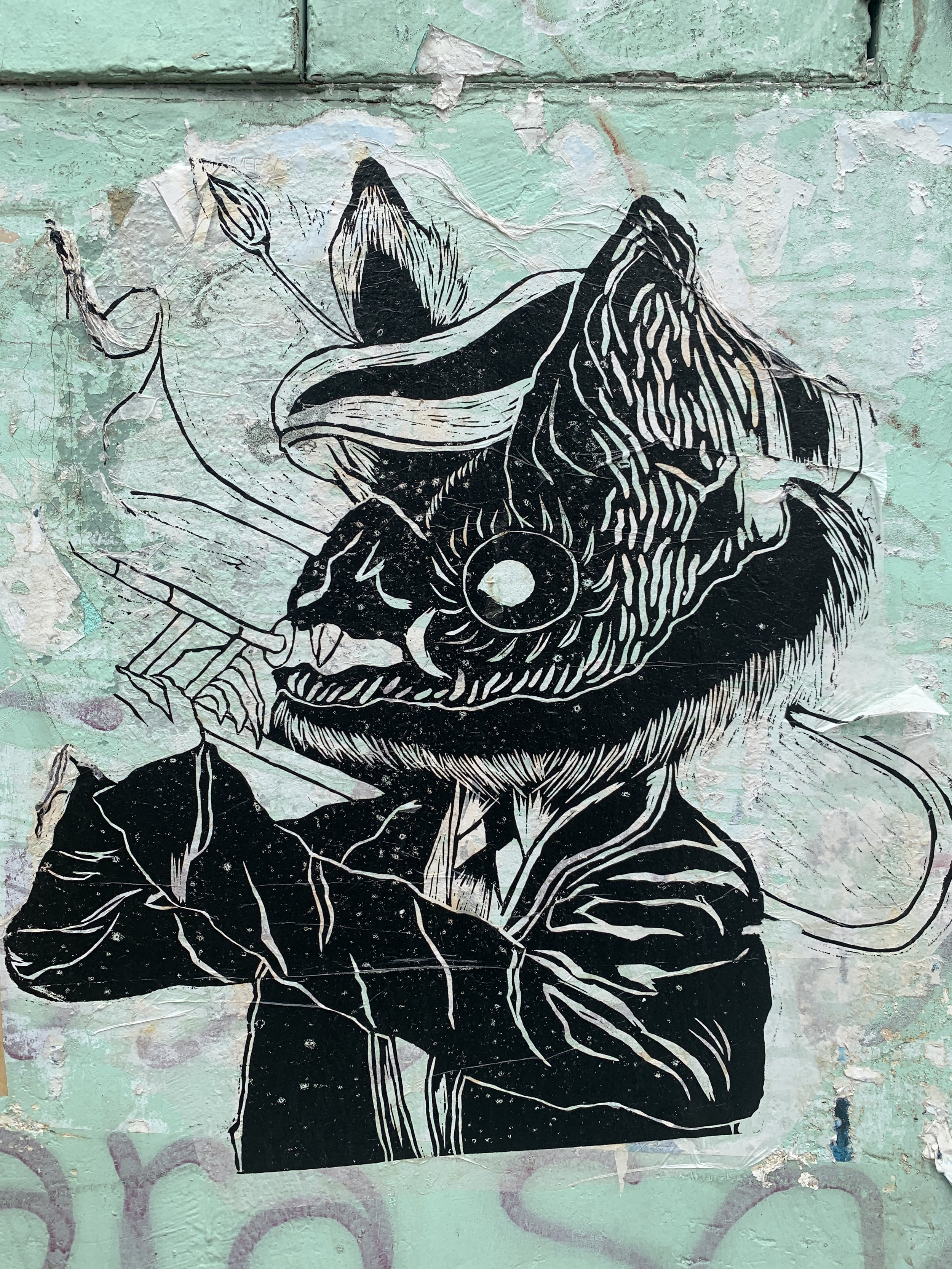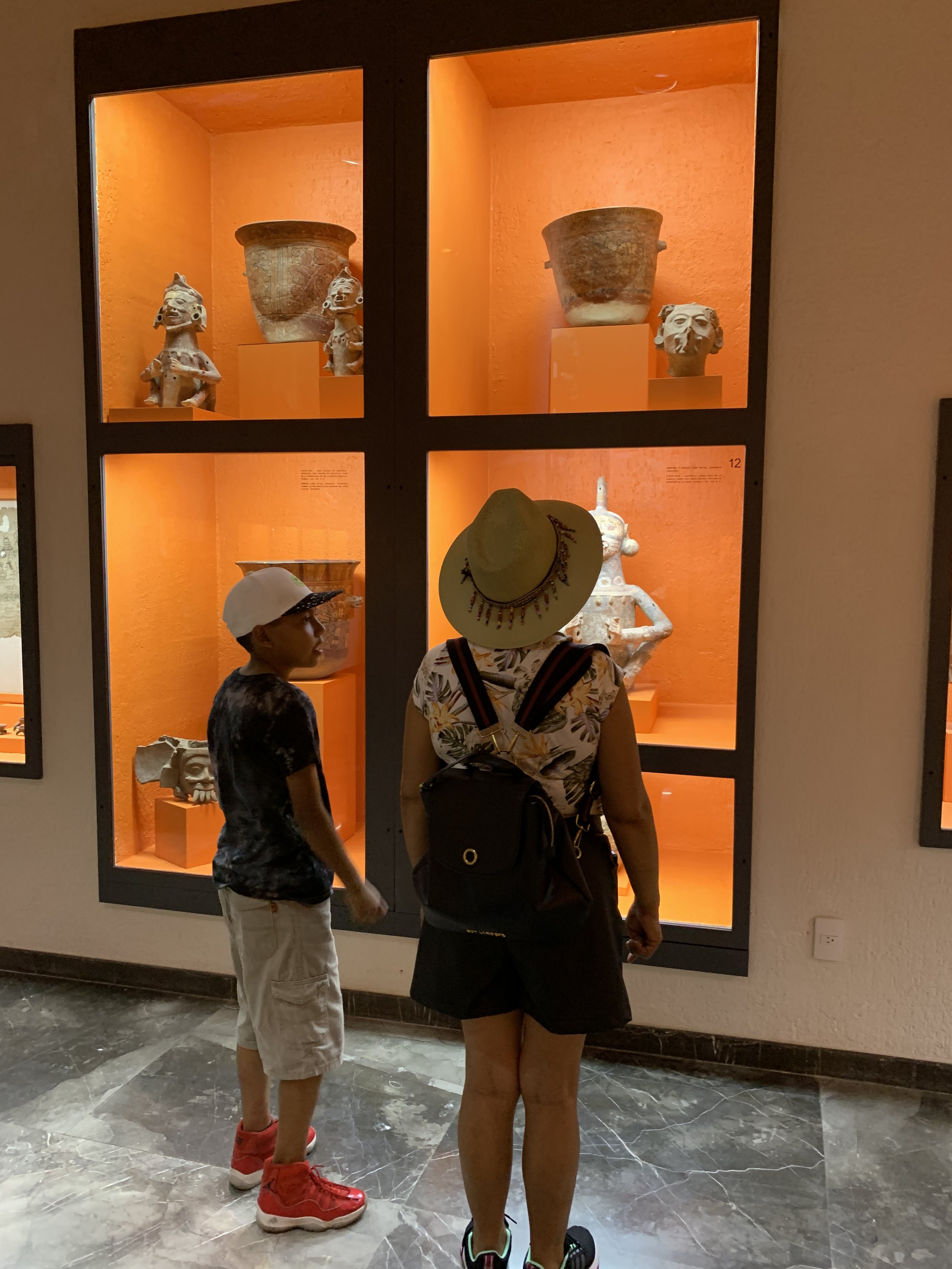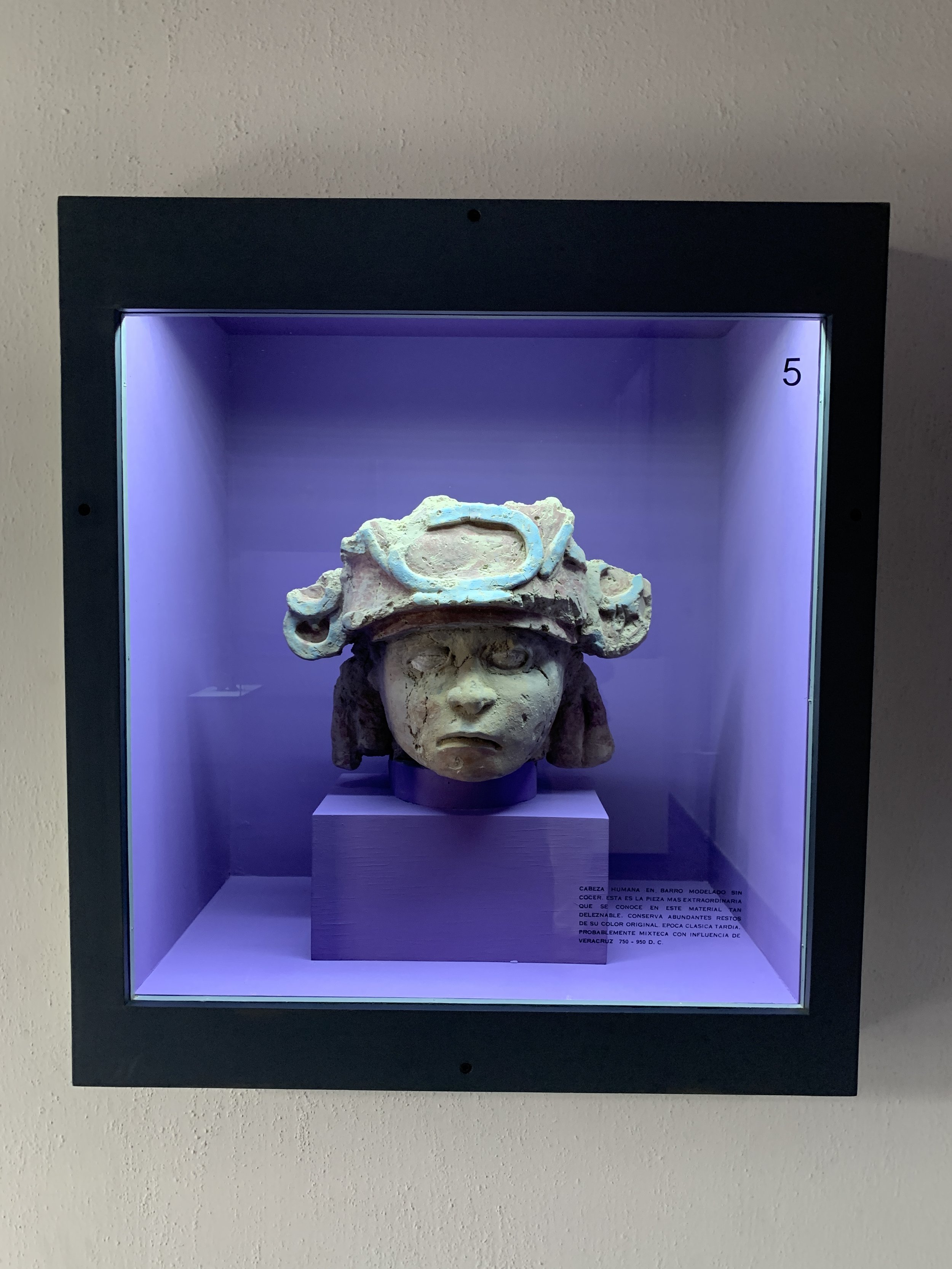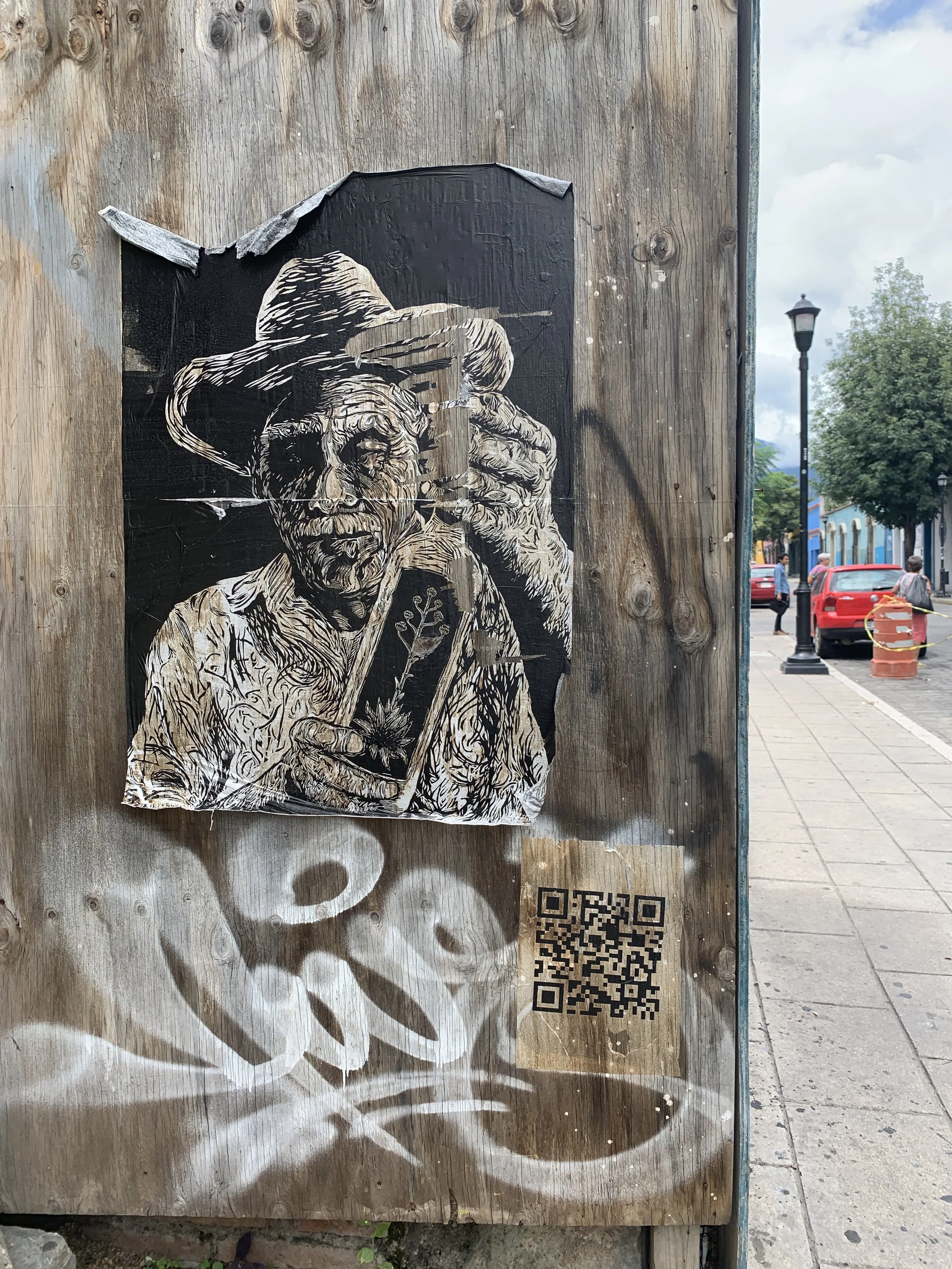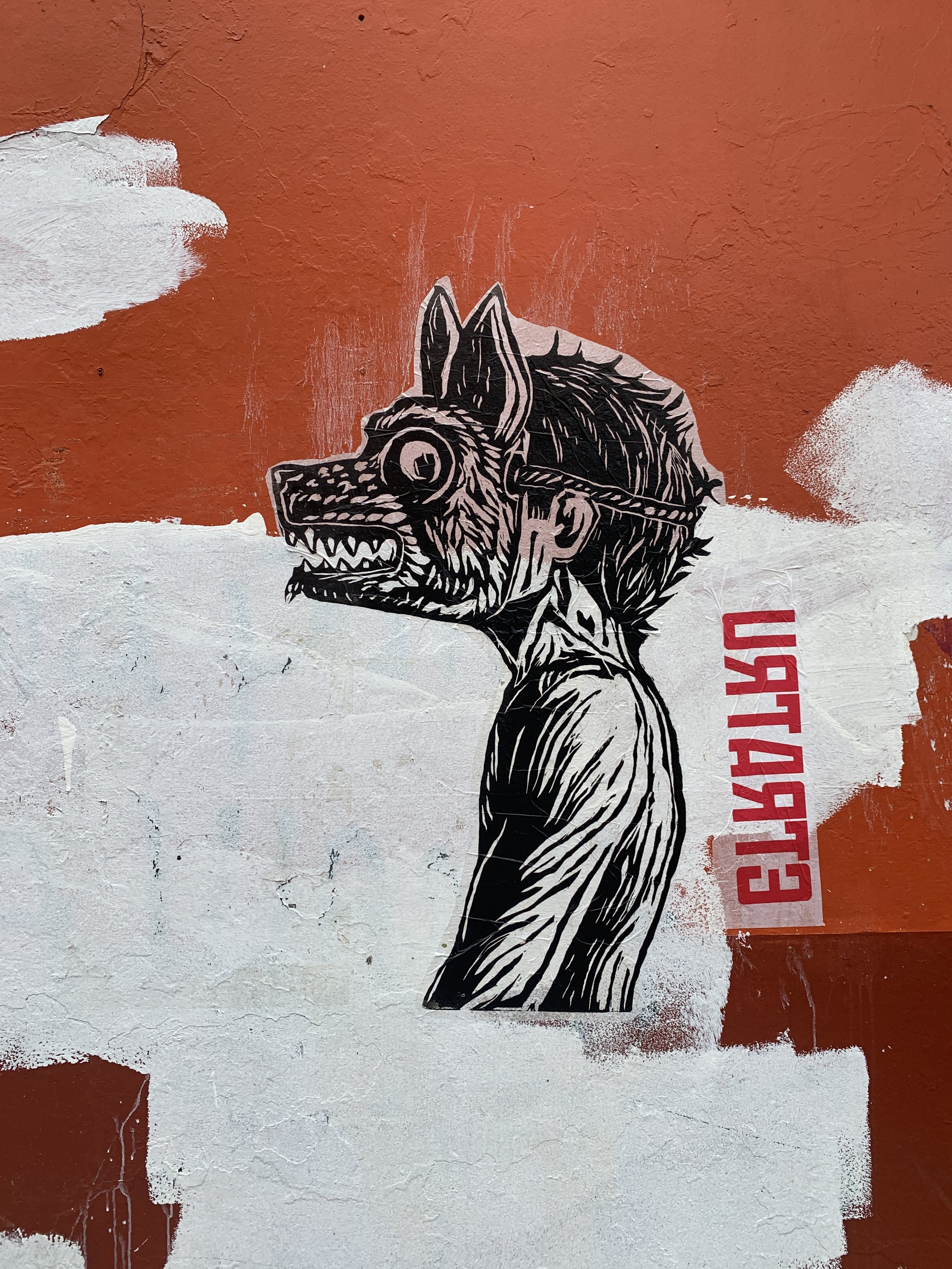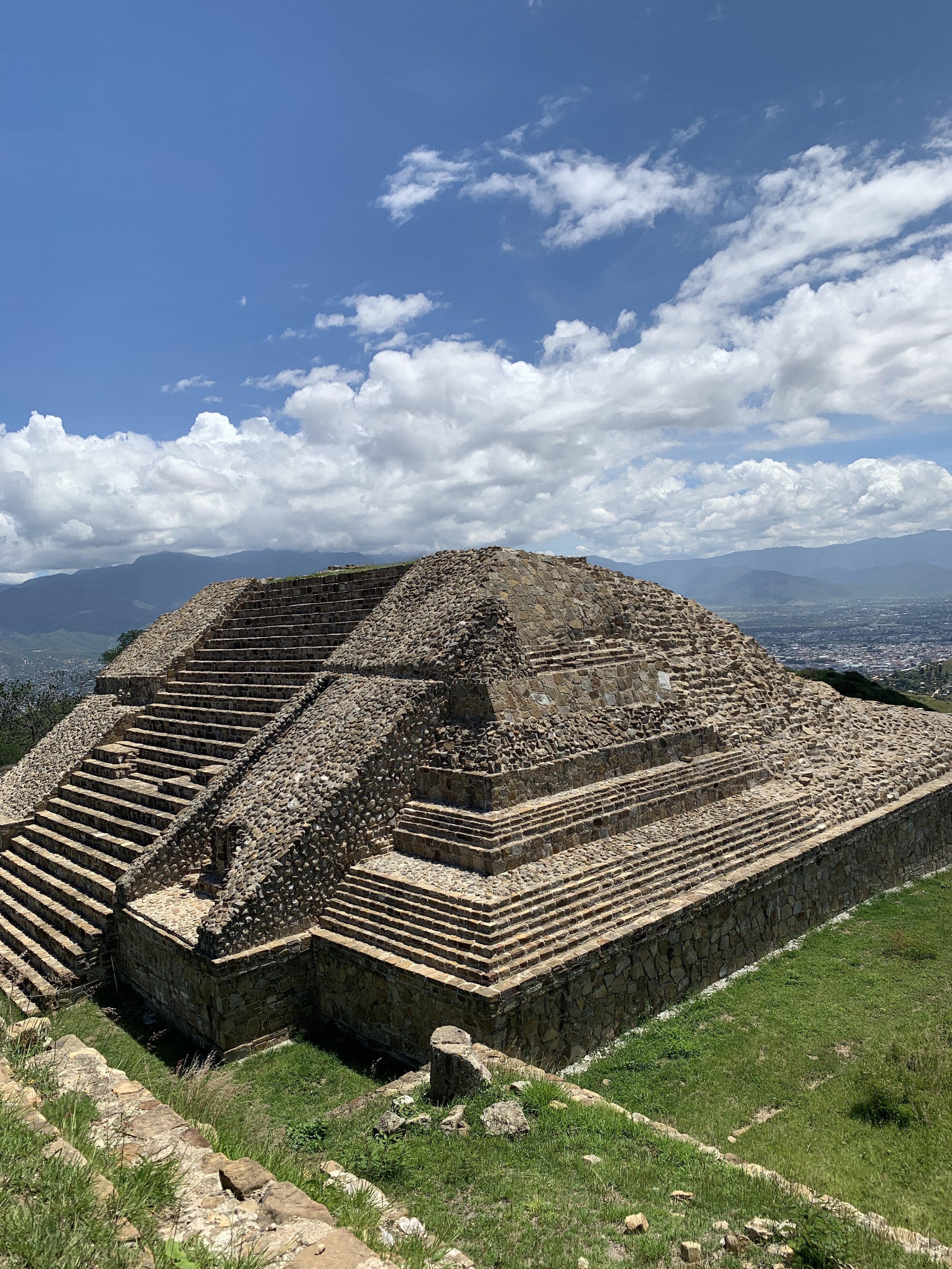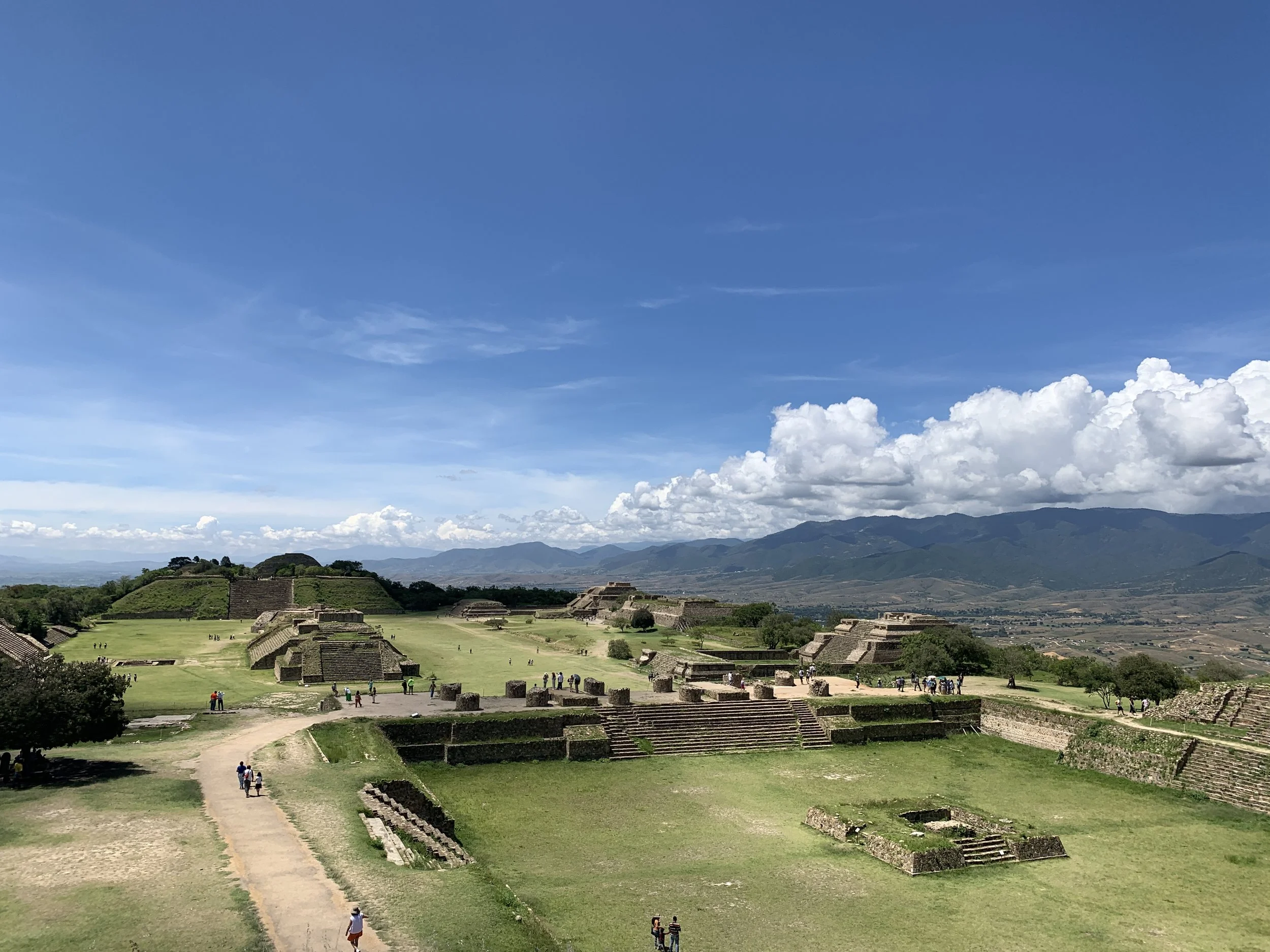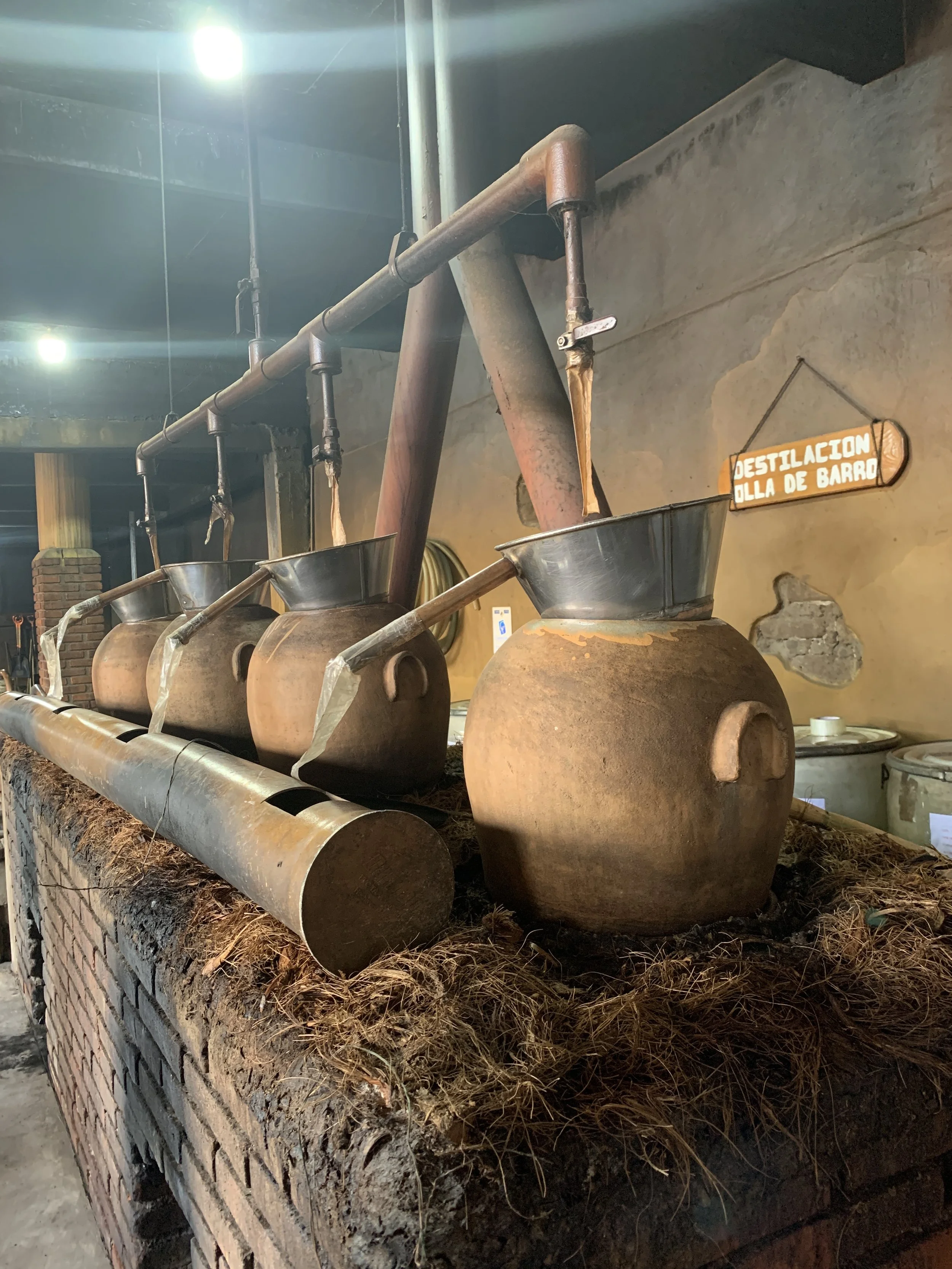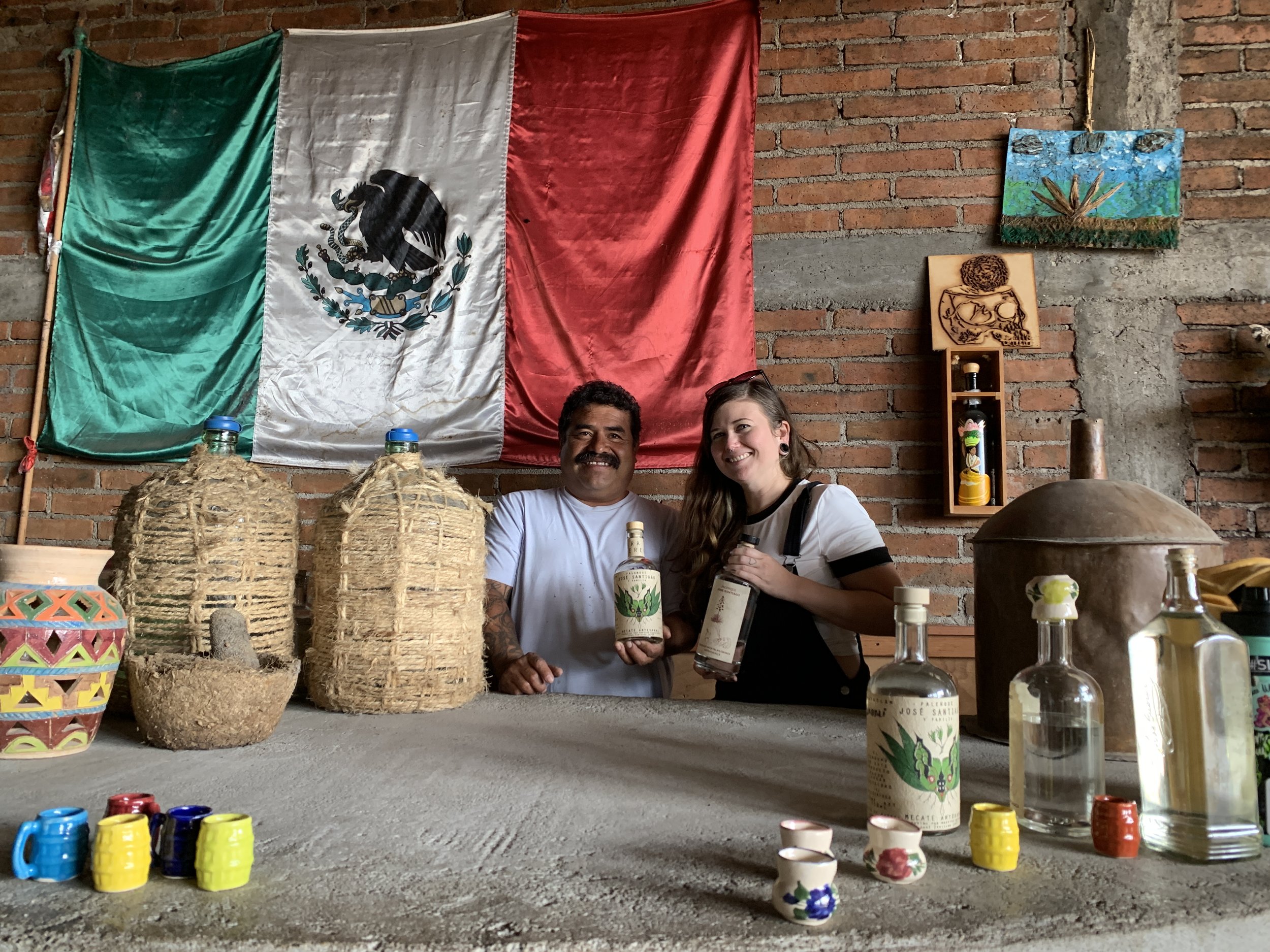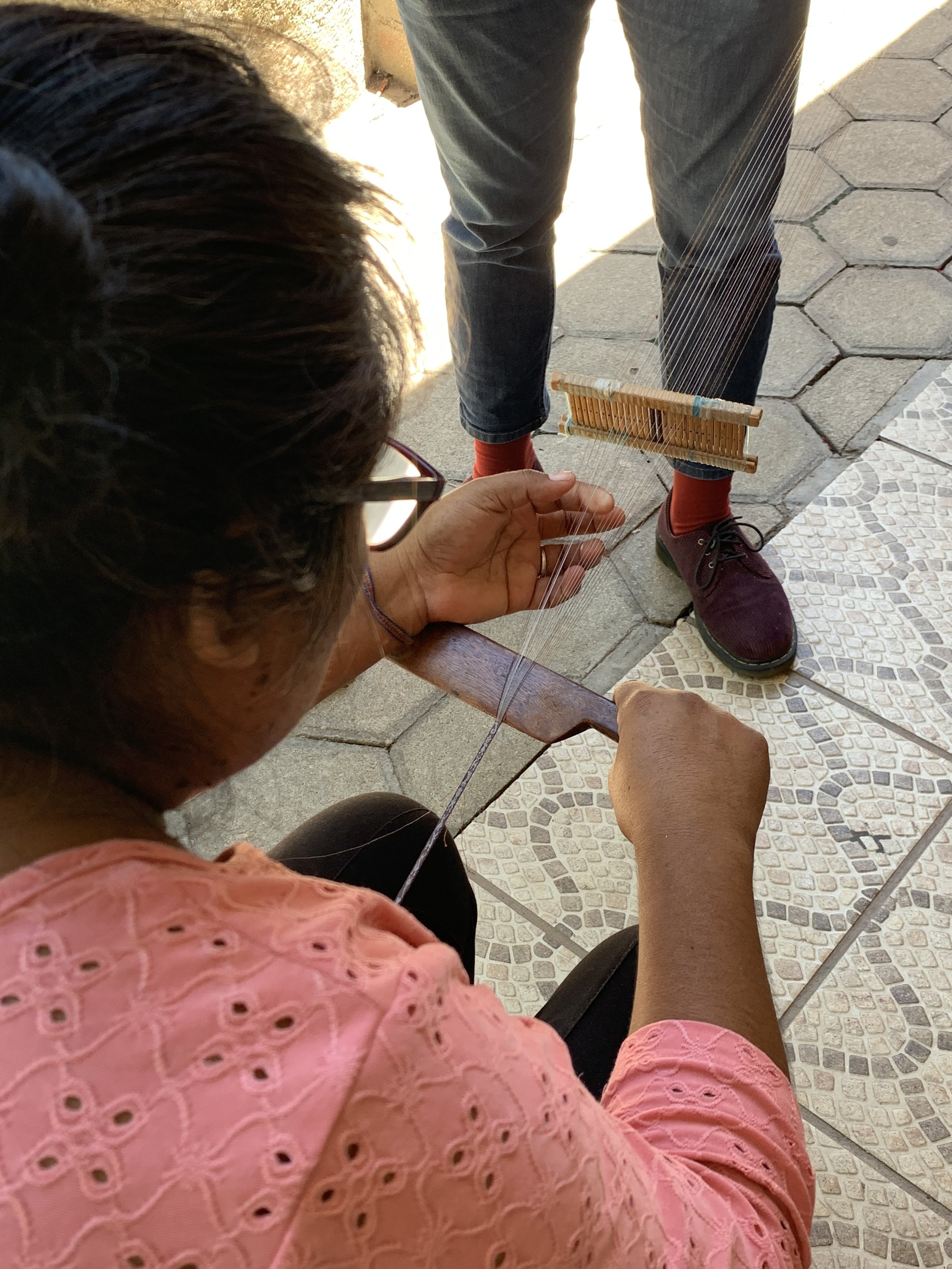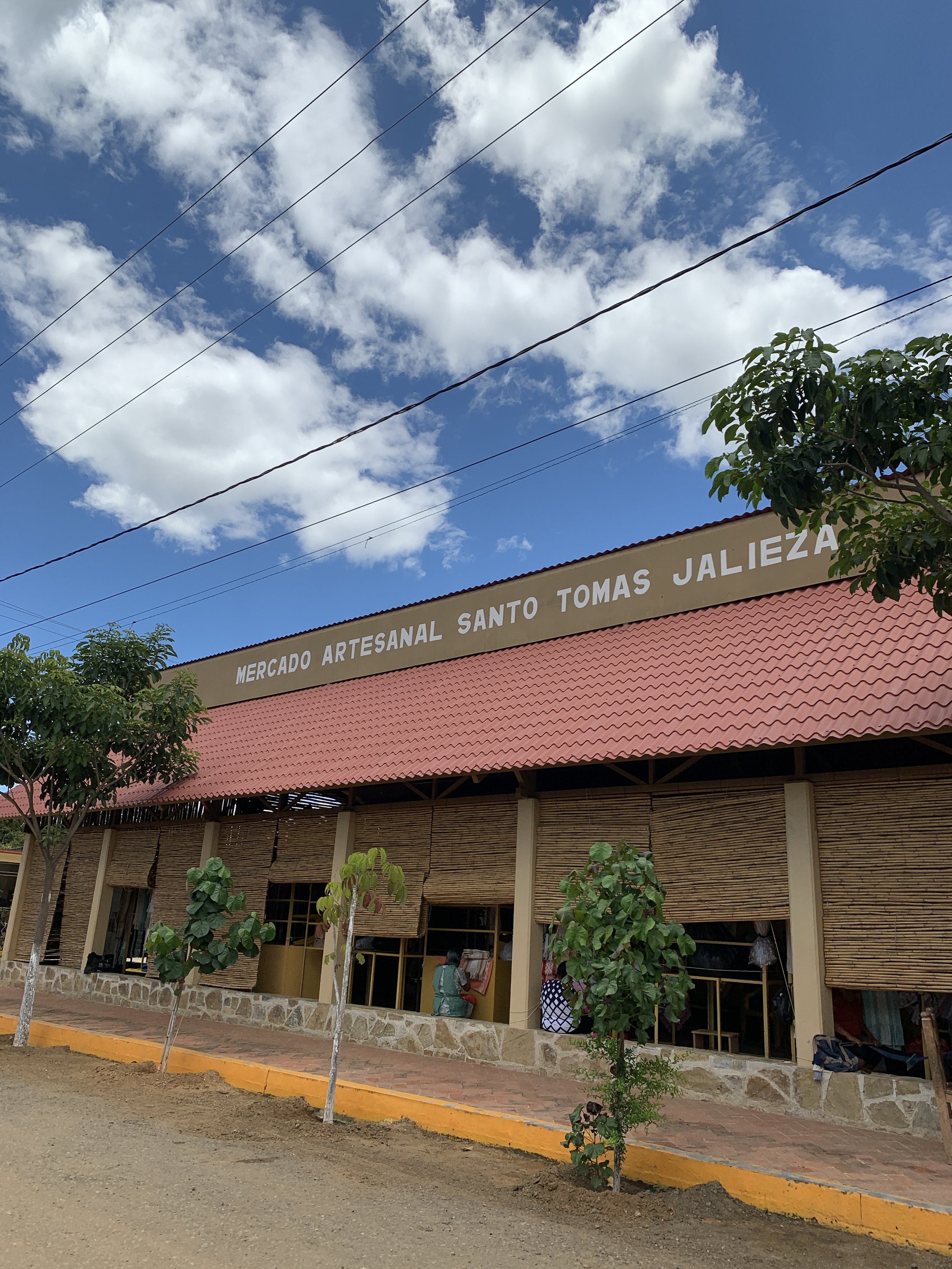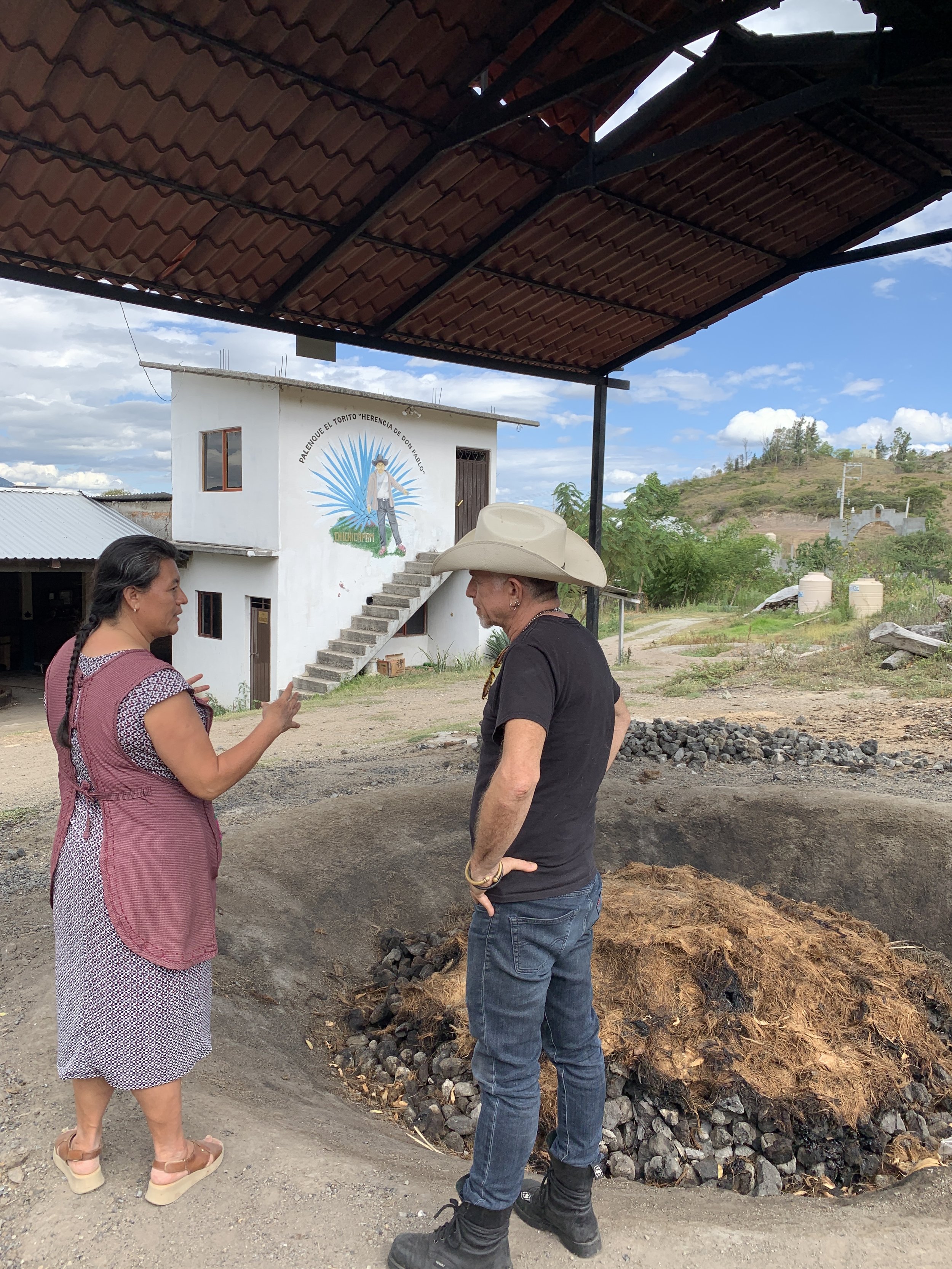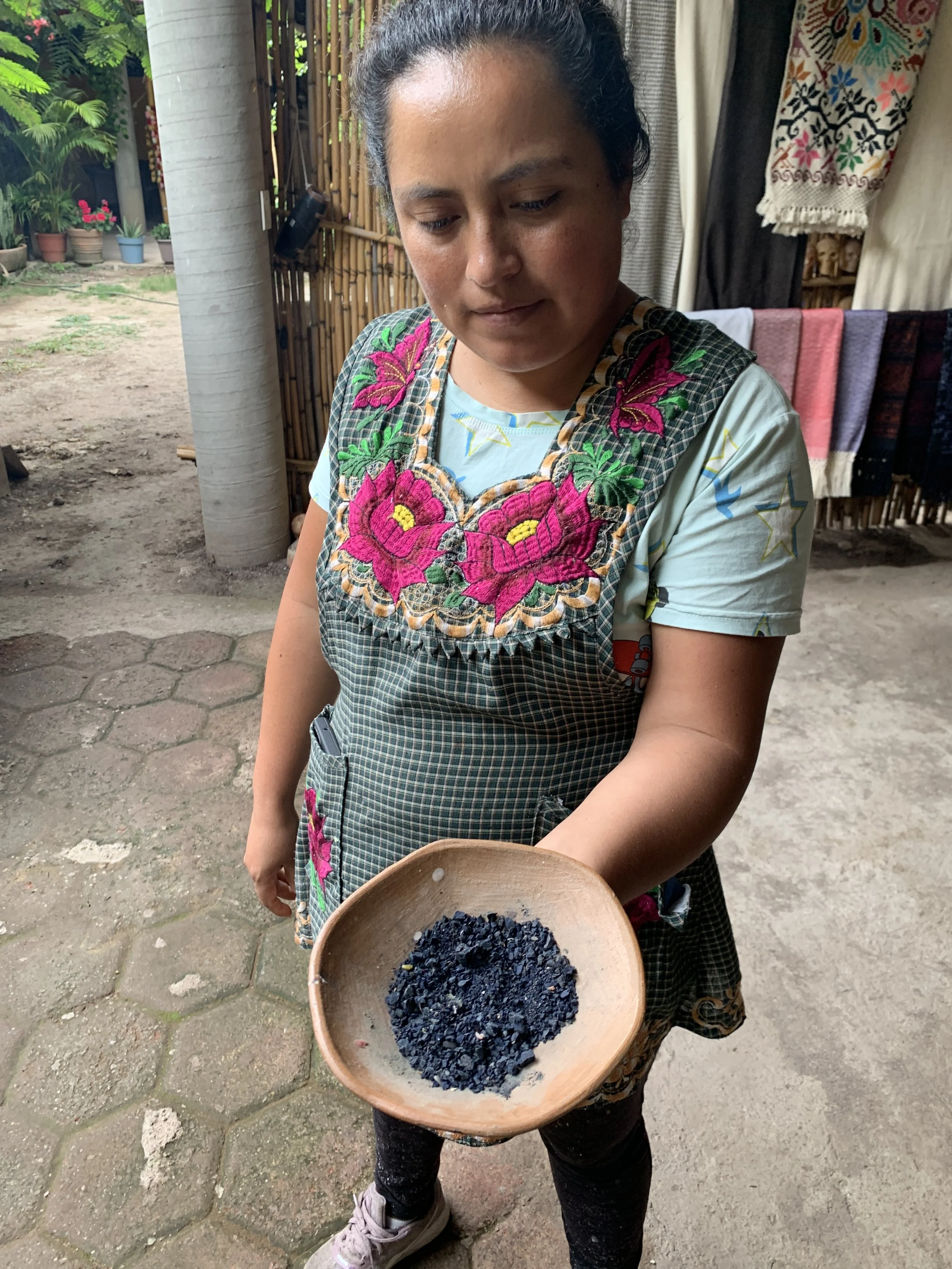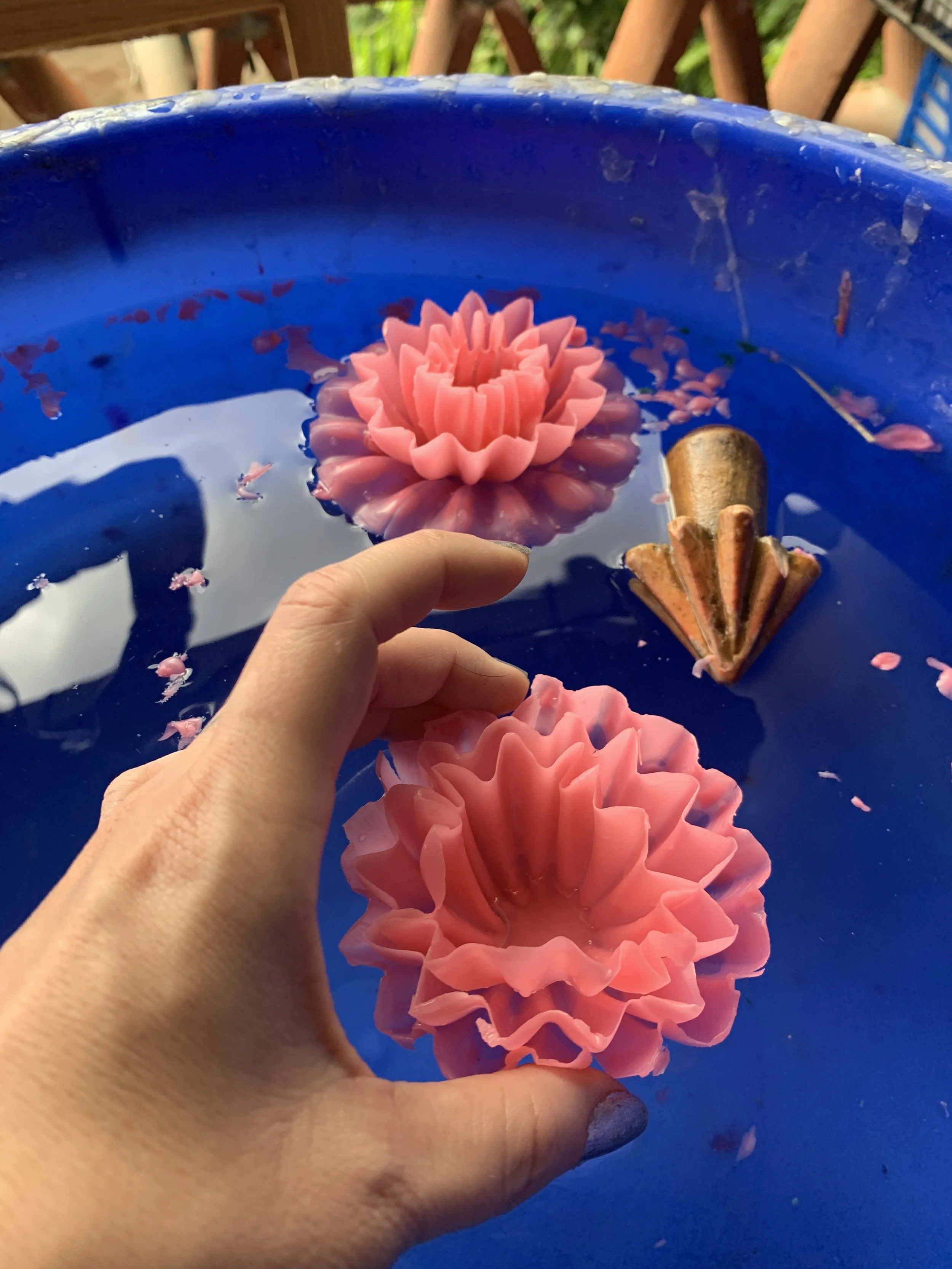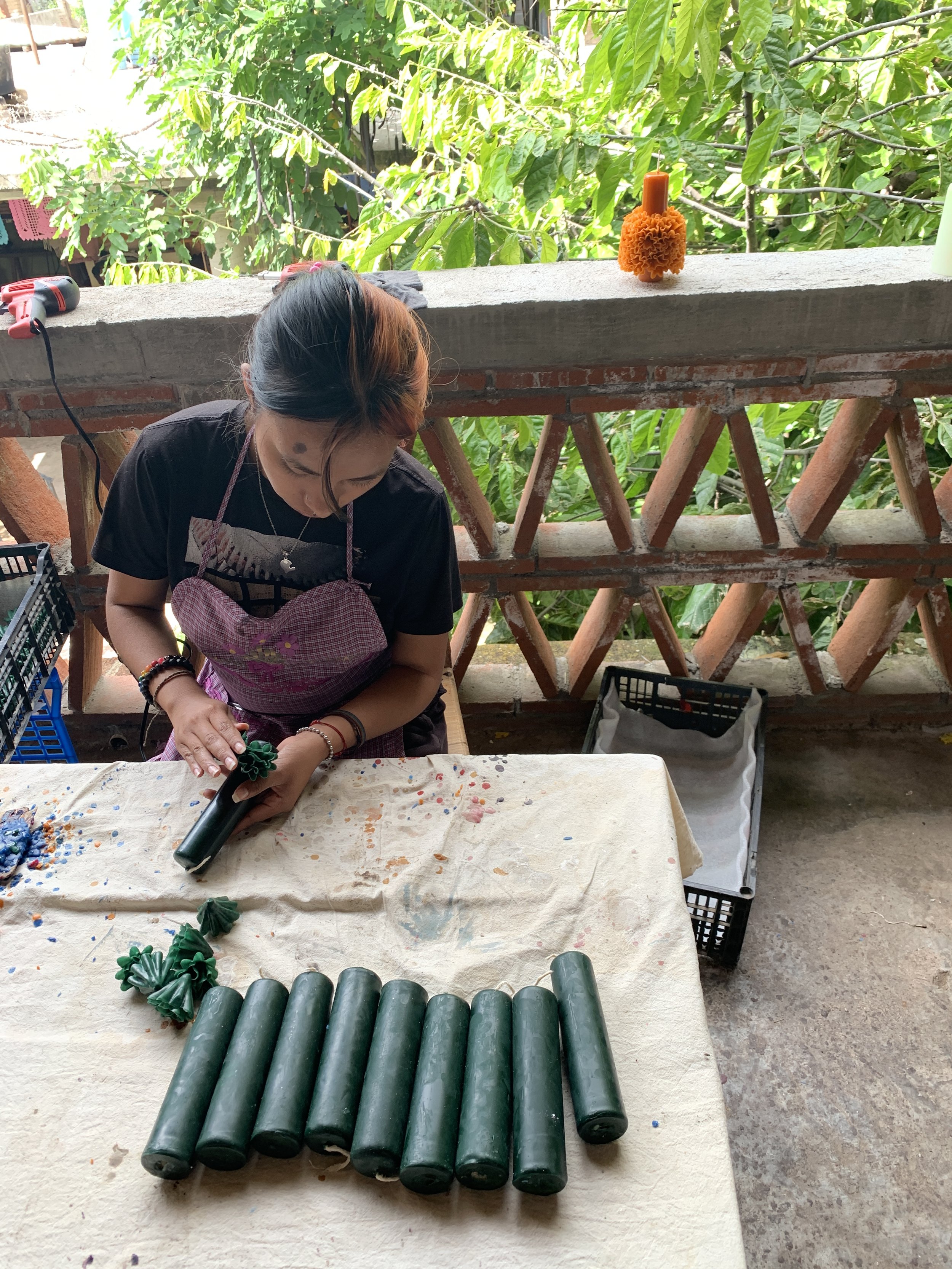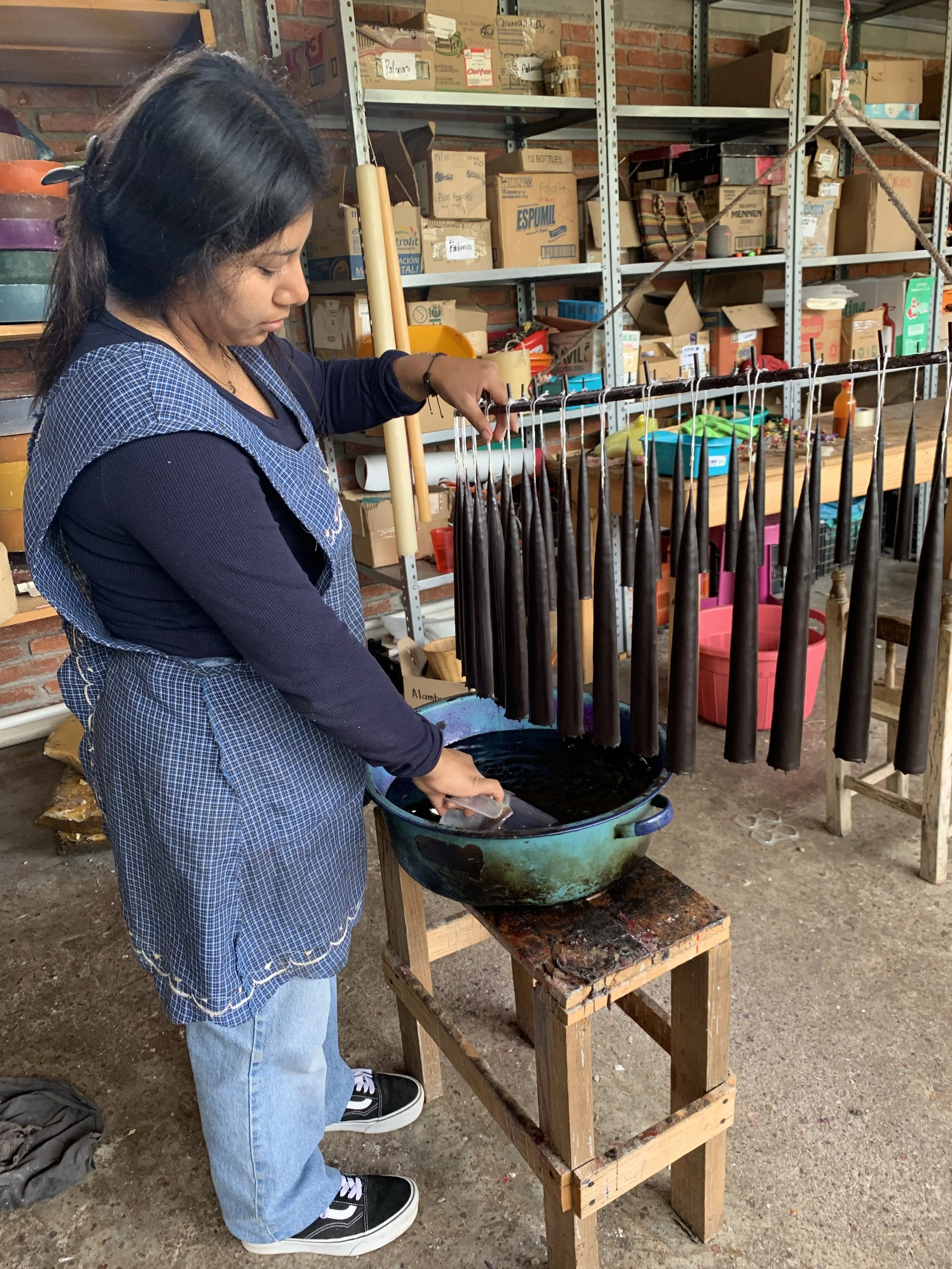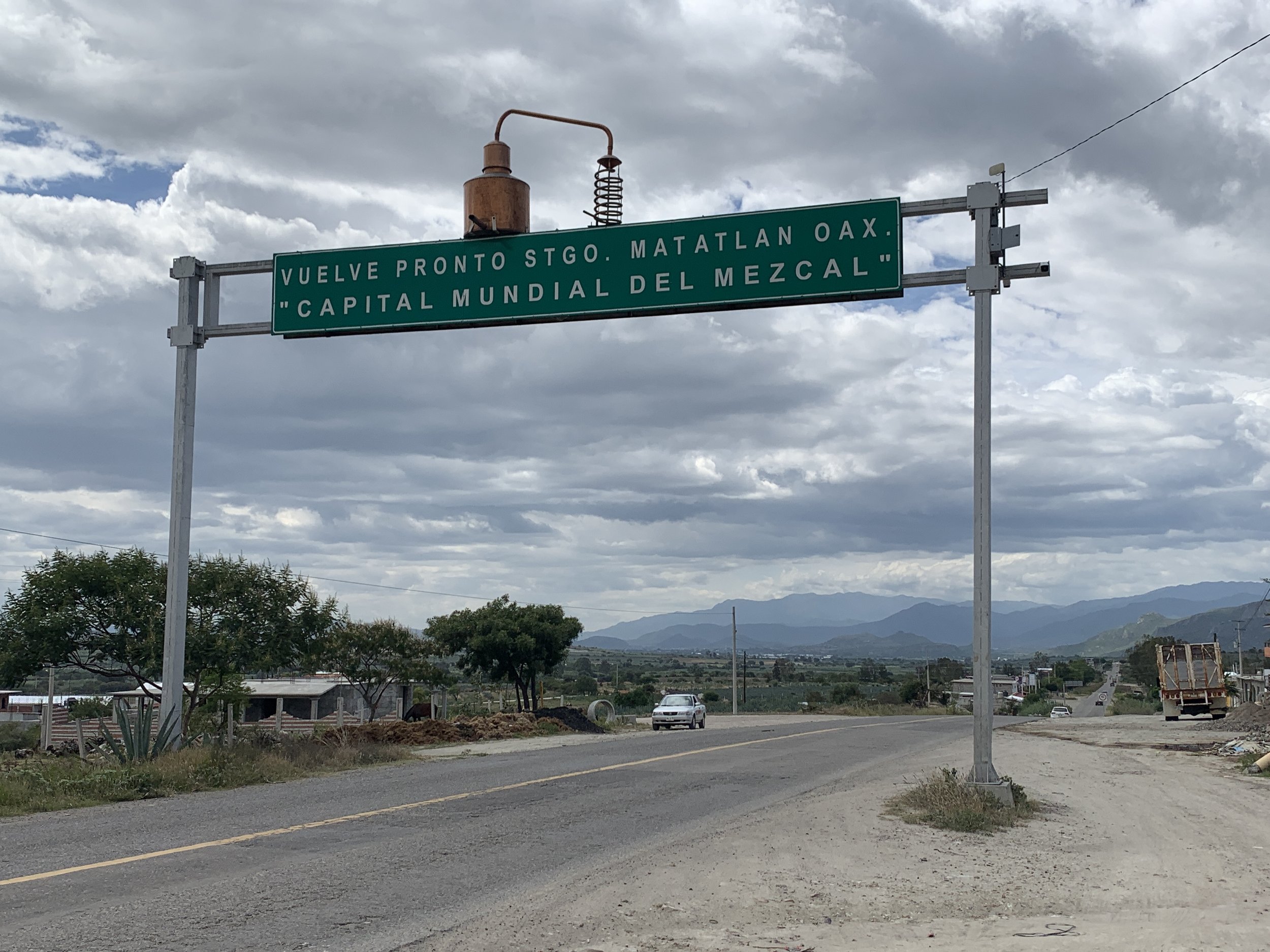Oaxaca Trip Report: A First Timer’s Guide to Oaxaca City
After returning from a 7-day solo trip to Oaxaca, I am refreshed, reinvigorated, and resolved to return soon. Oaxaca is a magical place, one where incredible food is a step away on every street corner, and cultural parades are a common sight against the city’s brightly colored facades and Spanish colonial architecture. It is also city where Zapotec and Mixe culture (the two largest indigenous groups in the region) is proudly celebrated — references to the region’s indigenous communities abound among the city’s street art, its modern eateries, cocktail bars, paper shops, crafts, markets, and mezcalerias.
A First Timer’s Guide to Oaxaca City
When I first booked my trip, my plan was to eat and drink my way through the city, so this guide will take you on my journey, peppered with information on the local markets, art museums, and nearby villages I visited on this trip.
Mezcalerias
After arriving at the Oaxaca city airport, I took a taxi to Soltera, the beautiful all-female-focused property, where I was to spend the next few days, and was greeted with a special copita of mezcal made from penca verde, an unclassified species of agave. From that moment, I knew I had come to the right place, and I was eager to try more.
Since the Oaxaca region accounts for over 70% of mezcal production in Mexico, you really can’t take a step in Oaxaca City without stumbling onto a place that sells mezcal. But that doesn’t mean it’s all good. I’ve always loved mezcal and going into the trip I wanted to learn more about this special spirit. I had some previous knowledge of how it was made and the variety of distillation equipment often employed, but I was absolutely not prepared for the depth and variety of what I was about to taste upon arriving to Oaxaca — from mezcal made with single-species wild agaves I had never heard of before to ensambles (various agaves mixed together to create a blend), pechugas, and spirited infusions that promised to cure all that ails you.
It can be hard to pin point where to start when the bars in Oaxaca are stocked with so many bottles to choose from. A great way to wet your palate and figure out what you like best is to visit In Situ Mezcaleria or Mezcaloteca for a guided tasting. Both have incredible mezcal collections and the staff will customize the tasting for you based on your knowledge, what you like, and what you don’t like. Right next door to In Situ is Mezcaleria La Casa Grande de Oaxaca, an agave shop & bar with a selection curated by Graciela Ángeles Carreño of Real Minero where you can order mezcal a la carte.
Pro Tip: Make sure to make an appointment in advance if you’re planning to visit Mezcaloteca as they are reservation only.
If you’re like me, you’ll want to try as many agave distillates as you can on your trip, since you won’t typically get the opportunity to get many of these bottles back home. Remember to drink lots of water and pace yourself!
Local Markets & Regional Dishes
Traditional Oaxacan cuisine is not to be missed and is high among the reasons people (like me) travel there. Tlayudas, Memelas, and Mole are among the essential dishes you must enjoy while in Oaxaca. Did you know there is more than just Mole Negro? I have to admit I had only tried the typical chocolatey and complex mole negro, but I was delighted to find out there were more than 11 types of mole — each of them uniquely flavorful. Another regional favorite is atole, a corn and masa-based drink that is as nourishing as it is delicious. Visit La Atoleria at Tierra del Sol for an atole tasting to try traditional and new recipes — including hot and cold atoles made from heirloom corn and flavored with guava and rosita de cacao — from Mixteca chef Olga Cabrera Oropeza.
The local markets in Oaxaca are plentiful and they have everything from fresh produce, herbs, and food to leather goods, clothes, copitas, souvenirs, and folk art. Here are some of the essential markets in Oaxaca City and what I recommend you get there:
Mercado Benito Juarez - After a day of walking around, stop in to get an agua fresca and a Piedrazo at Aguas Frescas Susi. They specialize in horchata con tuna, a refreshing drink made with rice and prickly pear. I also walked around the market and purchased some small souvenirs to bring back with me.
Mercado de Artesanias - This market specializes in handicrafts. Here I picked up some traditional Oaxacan figures called alebrijes (you might recognize the name from Pixar’s Coco) and a few sauces as gifts.
Mercado 20 de Noviembre -This place is known for its Pasillo de Humo, a narrow section of the market lined with stalls selling and smoking grilled meats to passersby. If you decide to stop in, get the tasajo (cured beef) or chorizo and purchase other sides/accouterments from nearby vendors to complete the meal.
Mercado de Abastos - this is the largest open-air market (and can get very overwhelming!) but it is a fantastic place to get authentic food including the famous Memelas de Dona Vale featured on Netflix. I wandered until I found a stall full of locals eating quesadillas fresh from a comal. I ordered a flor de calabaza quesadilla loaded with stringy Oaxacan cheese and mole. If you don’t speak Spanish or want a more curated experience, consider a guided tour from local food expert Oaxacking.
Mercado de La Merced - This is more of a local’s market, and I found it to be a bit quieter than the other markets in the center of town. I ended up here on a recommendation from my Airbnb host and it did not disappoint! If you don’t feel like venturing into the Mercado de Abastos, it’s a nice place to get your memela fix. I got two memelas at La Güerita located at the entrance of the market and sat on their long table listening to the owner’s kid’s play while I enjoyed a sencilla (how a memela is traditionally served) and a memela with chorizo with a horchata. After my meal, I took the opportunity to make my way over to Barrio Jalatlaco, since it is located very close by.
Cocktail Bars, Coffee Shops & Restaurants
Oaxaca is a true culinary mecca, consistently pushing the envelope through its magnificent range of top-notch food and inventive drinks. The city has not just one but three bars that have made North America's 50 Best Bars list — In Situ (mentioned previously), Sabina Sabe, and Selva. I was able to make it to the first two.
Sabina Sabe, named after famed Mazatec medicine woman María Sabina, serves up a variety of original cocktails employing local Mexican ingredients alongside riffs on classic cocktails. I visited early in the day and sat at the bar where I got a perfectly balanced sherry cocktail before ordering my bartender's recommendation for a light bite — an elegantly plated sweet plantain dish served drenched in a red mole sauce with a generous sprinkling of fresh cheese on top. I finished off with a bartender’s choice Mezcal Negroni (when in Rome!) combining Cynar, vermouth, and mezcal for a very flavorful spirit-forward cocktail. While Sabina Sabe was just my speed for a mid-day stop, the staff and a guest I met while at the bar all noted how the place really gets going at night, making it a weekend hotspot if you want to experience Oaxaca’s nightlife.
A Tiki Bar in Oaxaca? Sign me up! Aloha Oaxaca is the only tiki bar in the city and was a must-stop for me given my predisposition for tropical cocktails. Unassuming from the outside, this former adobe hacienda building houses a sprawling tropical retreat nestled across the street from Jardín Conzatti, a park named after the renowned botanist. Inside you’ll find all the fixings of a typical tiki bar but with a Mexican twist. Rum still finds a way into traditional tiki drinks and flaming scorpion bowls, but you’ll also find original mezcal tiki drinks too. Sit under the Mexican palapa with a thatched roof strung with twinkle lights or pull up a seat at the dimly lit bar and enjoy the very chill and very welcoming atmosphere.
I could easily go on and on about everything I drank and ate in Oaxaca but I’ll stick to the highlights. Below are some of the restaurants and dishes I had the pleasure of enjoying during my time in the city. I’m also including my all-time favorite cafe in Oaxaca — I went three times during my trip!
Levadura de Olla - This was my favorite restaurant. Levadura de Olla highlights the food of Oaxaca’s indigenous communities, and in particular, you’ll find many of the sacred foods of the Sierra Sur where the young female chef Thalía Barrios is from. The name comes translates to “clay pot yeast” which is a reference to the traditional process of baking bread in clay pots. From the traditional ethnic Oaxacan beverages to its stellar cocktails, the rich moles and tamales, the seasonally rotating menu is all excellent. If in season, one of the most popular dishes here is the heirloom tomato salad served with a fruit vinaigrette.
Casa Oaxaca Restaurante - Casa Oaxaca is a staple of Oaxaca City’s restaurant scene and has been featured in many segments about the city. Make a reservation for after dusk and walk through the building’s vibrant blue exterior through the courtyard, and up the stairs to a magical candle-lit terrace with views of the Templo de Santo Domingo. There’s a reason why this place has a reputation and its contemporary take on Oaxacan cuisine is not to be missed. If you’re traveling with a partner, I would make this your romantic date night spot.
Labo Fermento - A fermentation lab and restaurant, Labo Fermento perfectly marries Oaxacan ingredients with Asian techniques from China, Japan and Korea. Some of the plates include fermented tomatillo, huitlacoche kimchi, and house-made miso made from fermented blue corn. I went with a friend I met on the trip and tried the lacto fermented tomato and corn, pork dumplings with fermented black beans and the crispy fried chicken, which had shoyu, garlic, and ginger and was served with an umami aioli.
Lechoncito de Oro - Visit this food truck after 8pm for some of the best pork tostadas I’ve ever had. The sauce they toss on top is delicious, but very spicy. Tell them to go light on the sauce if you’re like me and more of a medium-spice kind of person. You’ll see a mix of tourists and locals here enjoying their tacos, tostadas and tortas. Open late-night for those heading back from a night of drinking mezcal at the nearby bars.
Cafe Caracol Purpura - This lovely cafe was where I spent several mornings catching up on work over a fantastic cup of Oaxacan coffee. As a coffee fanatic, I did visit several other cafes but I kept coming back to Mariano Matamoros 619A. Don’t expect to grab a quick cup, this is the type of place you sit down, take your time and linger. Cafe Caracol Purpura specializes in gourmet coffee roasted in-house but they also produce artisinal chocolate. Currently, they work directly with more than twenty-two coffee producers and six cacao farmers in Oaxaca.
Art Museums, Street Art & Shops
Oaxaca has a rich history of folk art tradition passed down through generations, so it should not come as a surprise that the city is a creative hub where you can see exciting art that weaves together old-world tradition with new techniques and a fresh perspective on current socio-cultural and political themes. Art is an integral part of daily life in Oaxaca and can be seen on every street corner.
Here are some of the key highlights from my trip:
Barrio de Jalatlaco is an art-filled neighborhood just off ‘El Centro.’ The streets are dotted with colorful murals and hip shops including bookstores, coffee shops, eateries, gourmet ice cream, and even a beautifully designed co-working space. For the best experience, take your time to wander through this lively neighborhood, take in the street art, and pop into its contemporary art galleries.
Taller Arte Papel Oaxaca - This taller is a paper-making cooperative that teaches local and visiting artists paper-making techniques using natural woods, fibers, and local ingredients like pochote, and coyuchi to make art.
Subterraneos Oaxaca - An artist collective that incentivizes young people to express themselves through public art by teaching workshops and classes centered around giving visibility to social themes through art. You can see their work on many streets near el Zocalo and beyond but they also have a gallery/workshop space located at Av. José María Morelos 403.
Museum of Oaxacan Painters - This museum is very small but houses some great contemporary art and aims to promote local Oaxacan visual and graphic artists.
Museo Ruffino Tamayo - I was very lucky to be able to visit this museum, because it had been previously been closed since the pandemic and reopened the week I arrived. This museum houses a world-class collection of pre-Hispanic art donated by the city's most famous artist, Rufino Tamayo.
Museo de las Culturas de Oaxaca - This museum is devoted to regional history and culture, from the pre-Hispanic era to present day and is located in the monastery buildings adjoining the church known as the Templo de Santo Domingo, an iconic Oaxacan landmark and a example of baroque architecture.
Jardin Etnobotanico - This Oaxacan botanical garden occupies over 2 acres of land next to the Templo de Santo Domingo and is a must for nature enthusiasts. Check the schedule ahead of time as it is only open during scheduled guided tours and can be tricky to fit into your schedule. The weekly schedule is subject to change, but it includes limited tours in English and German as well as their more frequent tours in Spanish.
Beyond Oaxaca City
Oaxaca is a diverse region and while visiting Oaxaca City you can easily take day trips to nearby villages and archeological sites like Monte Albán, a UNESCO heritage site in Santa Cruz Xoxocotlán, considered one of the first major cities in Mesoamerica.
On this trip, I visited Santiago Matatlán (less than an hour from Oaxaca City) also known as the “World Capital of Mezcal” and Santa Catarina Minas, a region famed for its use of an ancestral technique, the use of a clay pot distillation process to make mezcal. If you are interested in visiting a working palenque (mezcal distillery), I highly recommend hiring Rambling Spirits, a bespoke tour guide company run by a husband and wife duo — photographer Anna Bruce and bar consultant Brooks Bailey. They have strong relationships with mezcaleros and can fully customize the tour to your interests incorporating cultural experiences like visiting artisans who specialize in traditional candle making, weaving, or even travel lesser-known ruins for a tranquil hike in between mezcal tasting sessions.
I also visited San Pascual Velas a workshop in the village of Teotitlán del Valle where Zapotec women make artisanal candles with natural dyes and Santo Tomas Jalieza, a village known for fine weaving. Here, we visited local artisans in their workshop-home and stopped into a local market where I purchased a dog collar with los danzantes (a traditional decoration referencing reliefs at Monte Albán that are called dancers) depicted on it —a little souvenir for my little pup back home.
While Zapotec was what I most commonly heard spoken (besides Spanish) in the city and the nearby villages, Oaxaca is home to about a third of the Mexican indigenous population, with speakers of more than 16 languages! Even the Zapotecs who I met on this trip commented that depending on where the person is from, the dialect can be almost like a different language.
I covered a lot of ground on my very first trip to Oaxaca and had a varied itinerary though I feel like I’ve only just scratched the surface. On my next trip, I hope to visit Alfonsina in San Juan Bautista La Raya for a meal, the Tlacolula Sunday Market, Hierve El Agua, and explore more of the smaller villages around Oaxaca City. I’ll also need to add plenty more time to visit the cloud forest in the Sierra Mixe mountains and take the small plane from Oaxaca City to Puerto Escondido to explore the coast. Oaxaca really has so much to offer!
For your own itinerary and planning to Oaxaca, reach out to the Trip Whisperer trip planing team. Custom itineraries are our speciality especially when you come hungry and thirsty! We love when our clients eat and drink well.
Follow Stephanie on her travels and libations. Thanks for your incredible guide!


